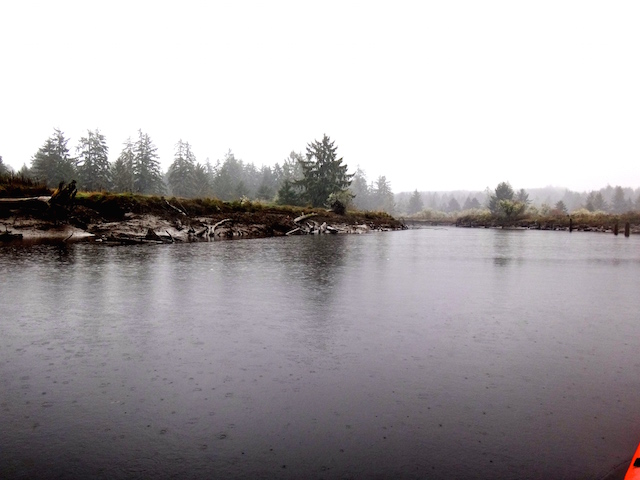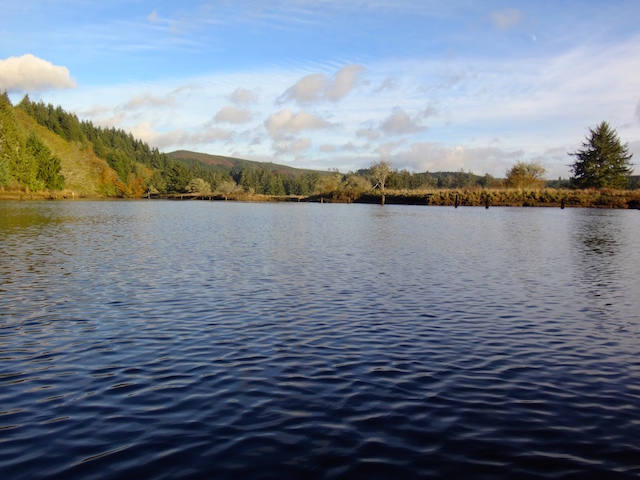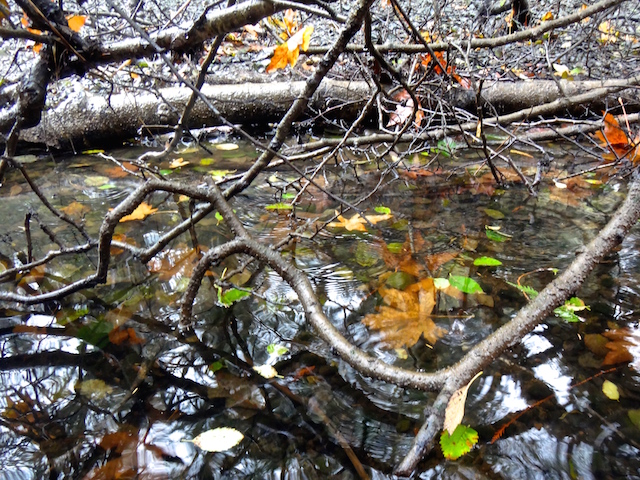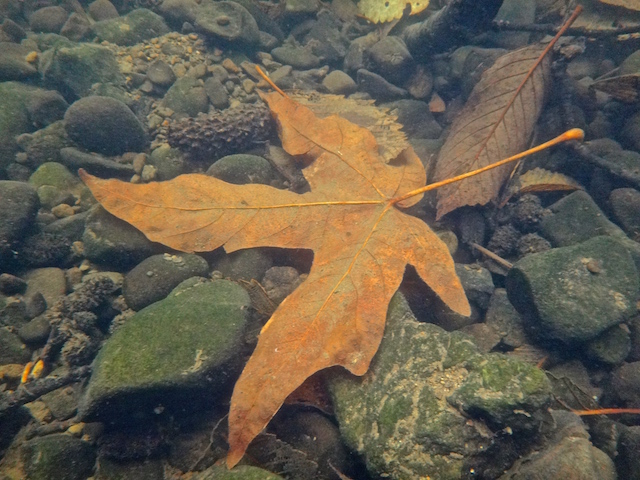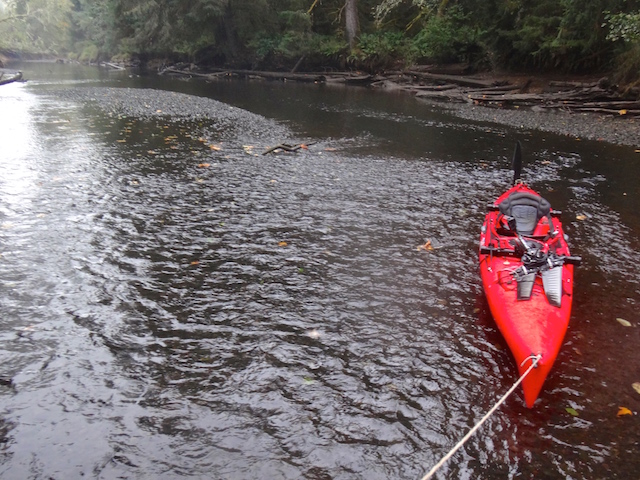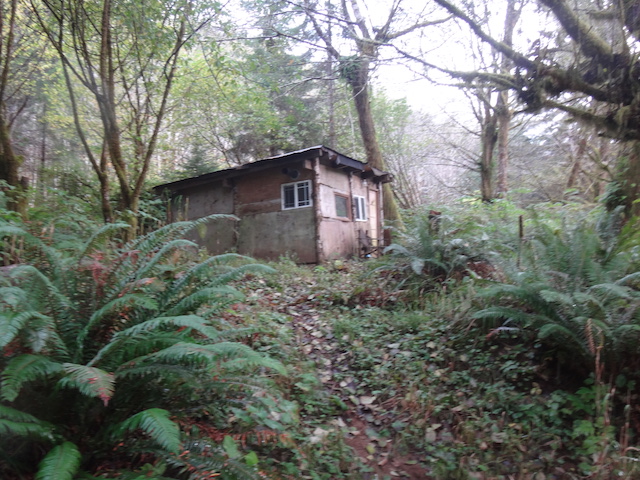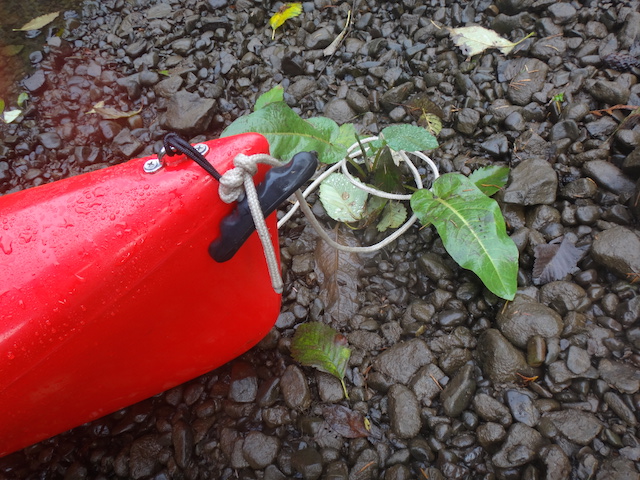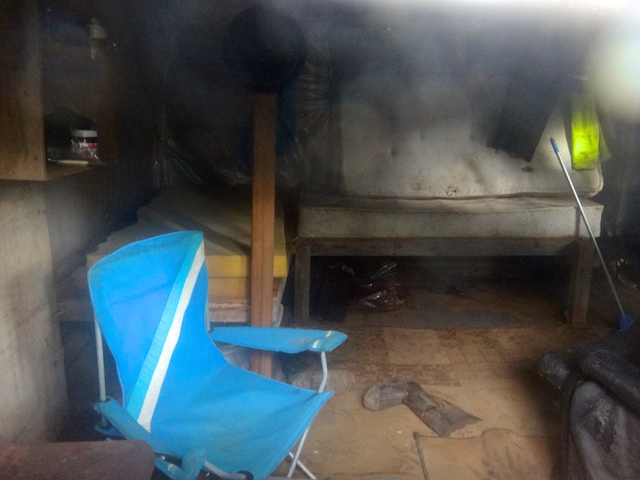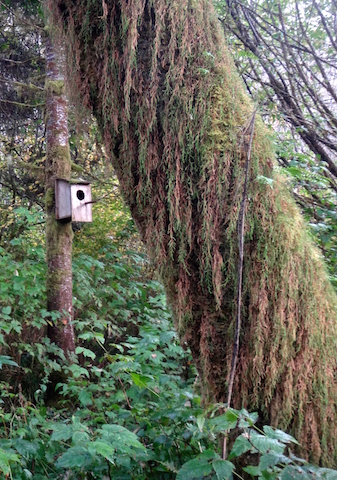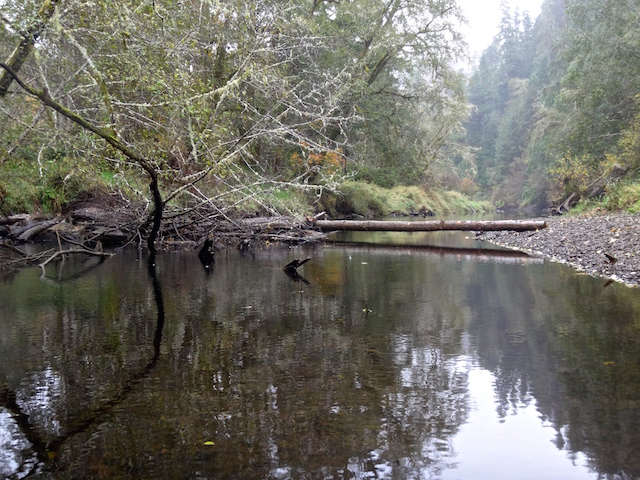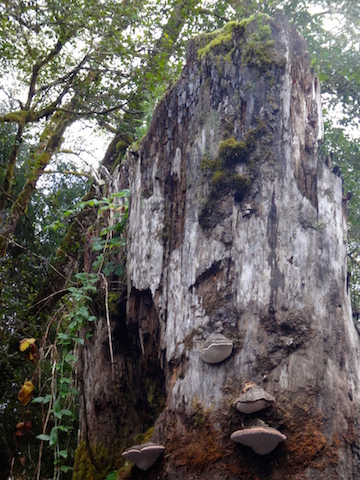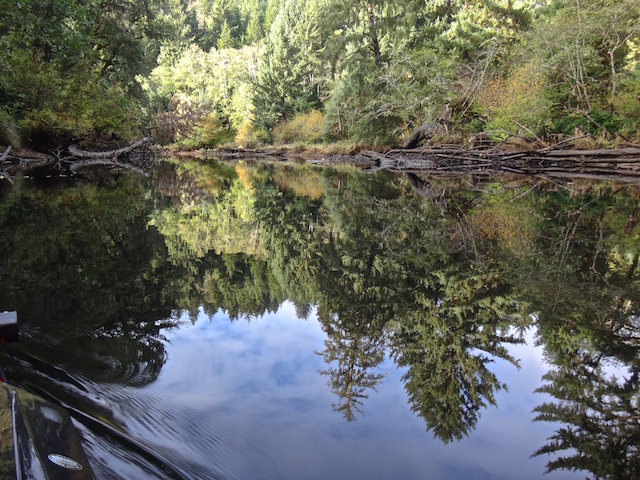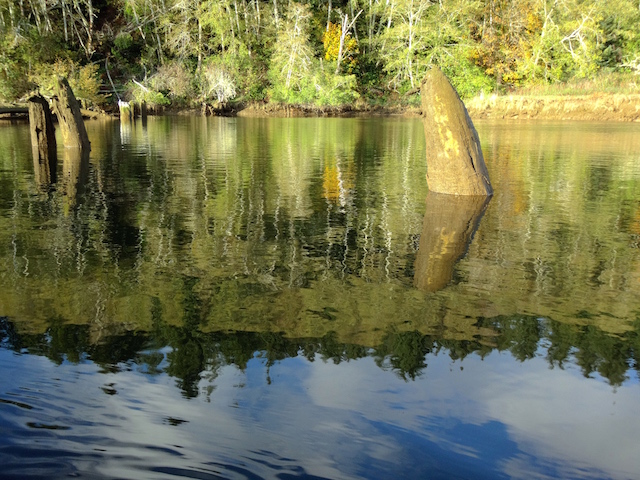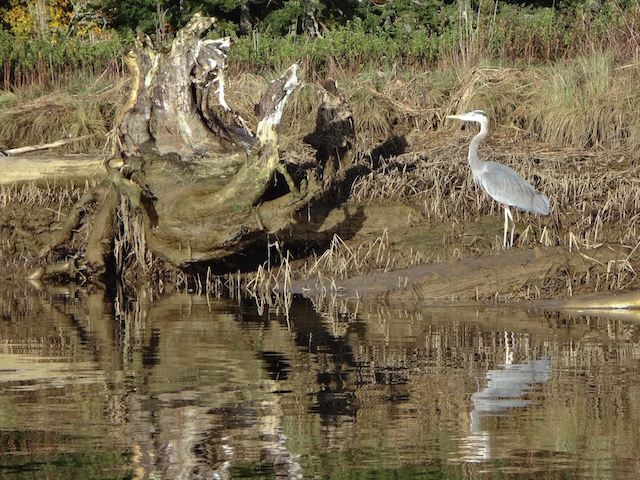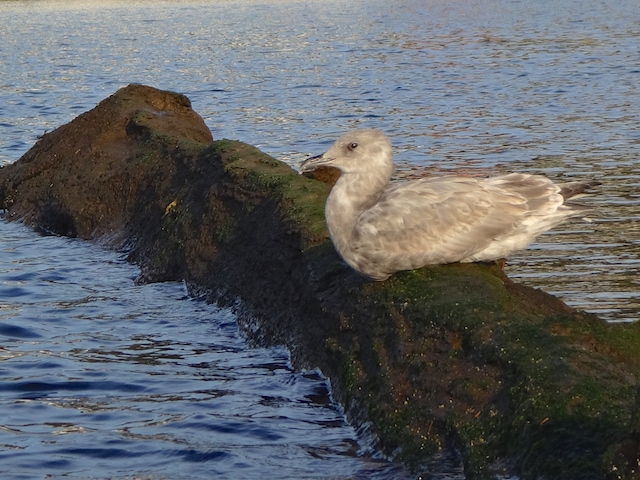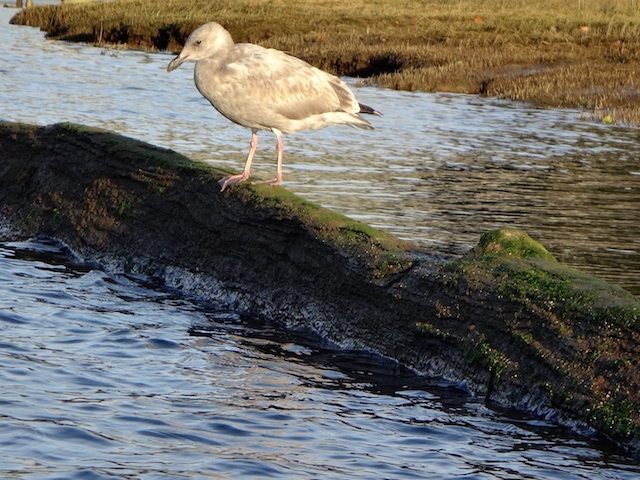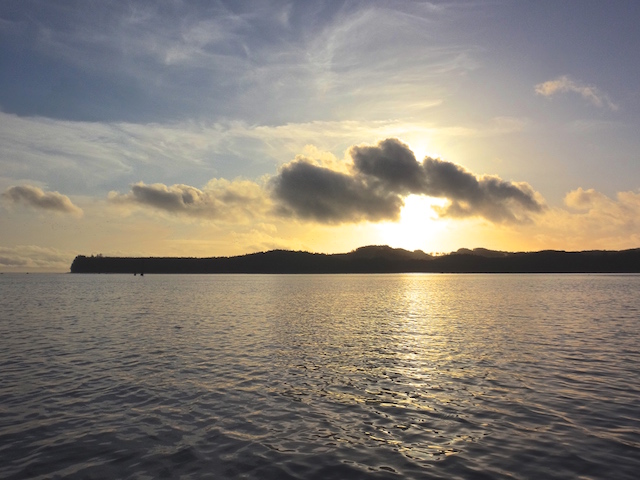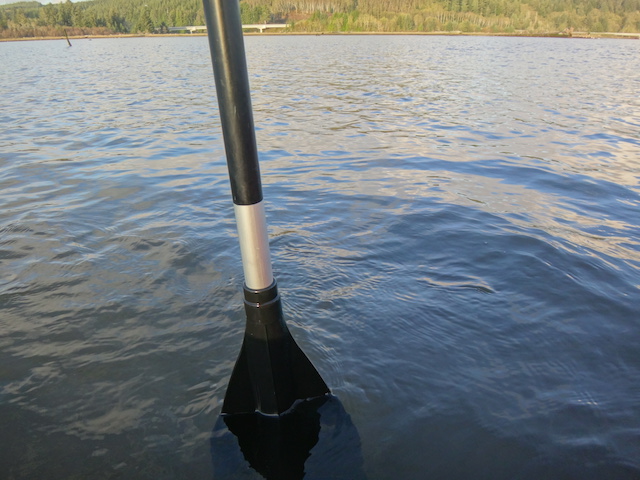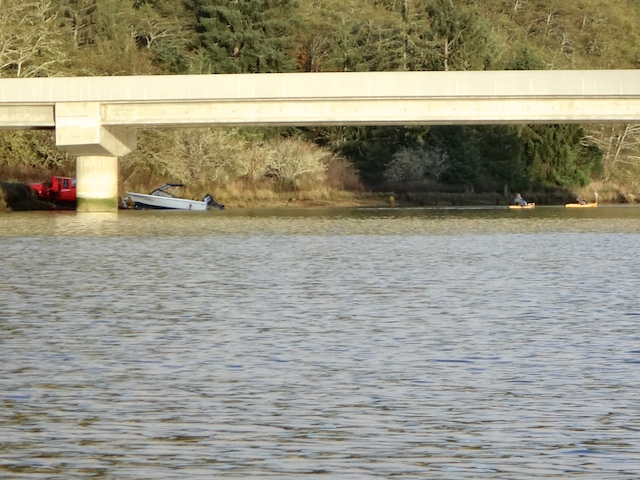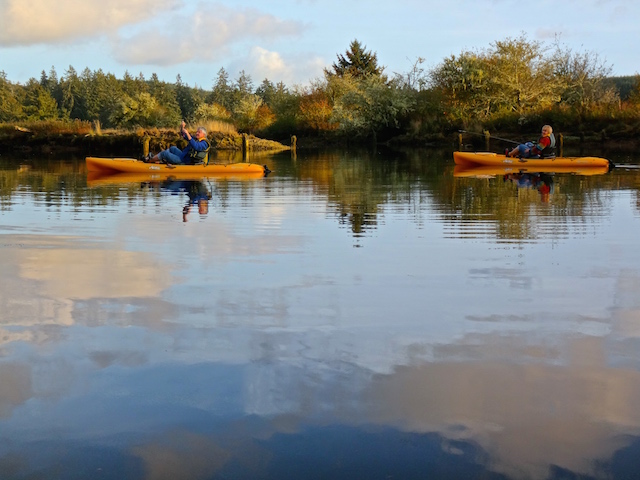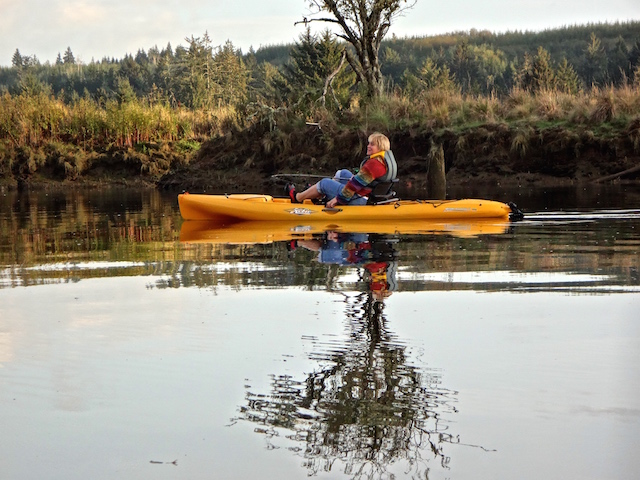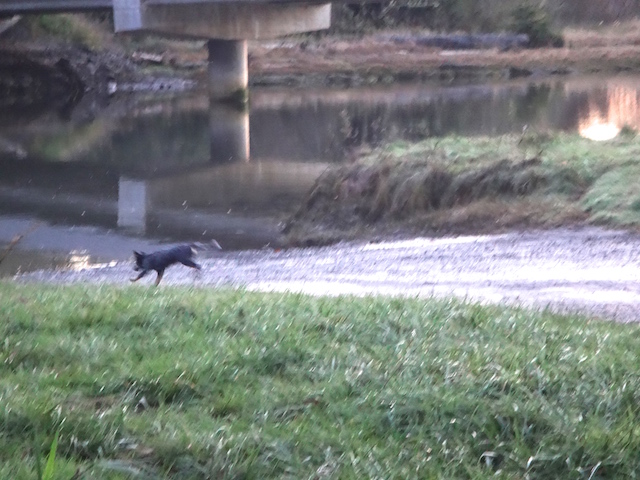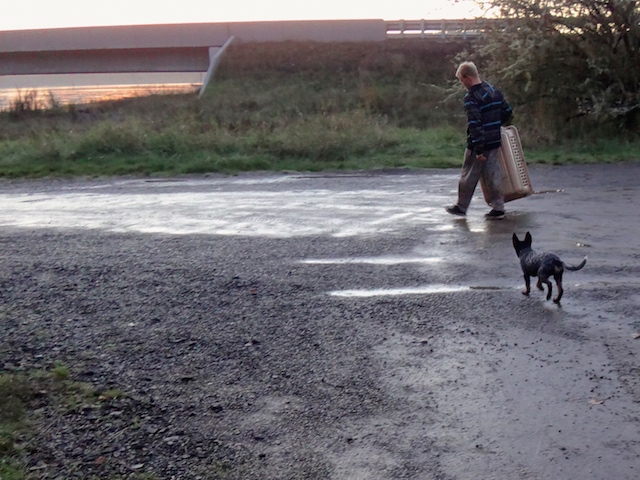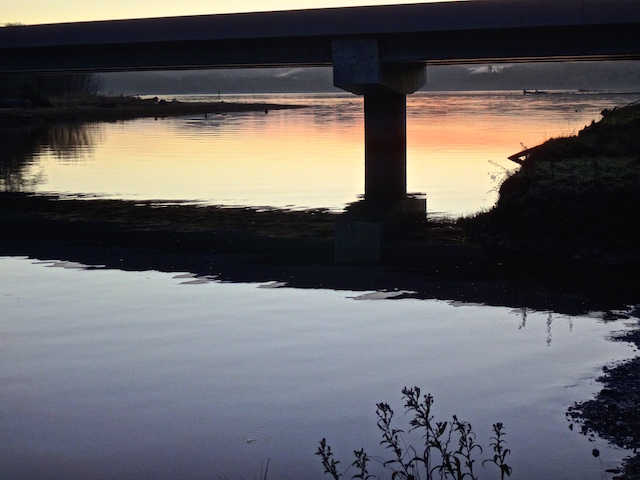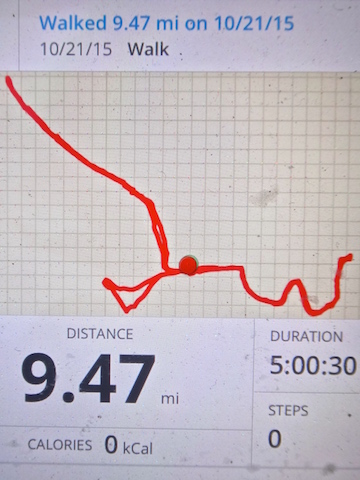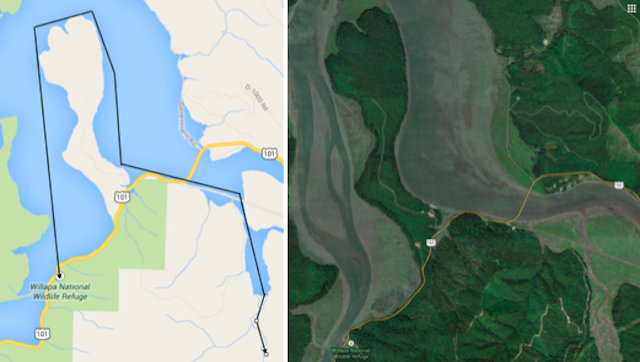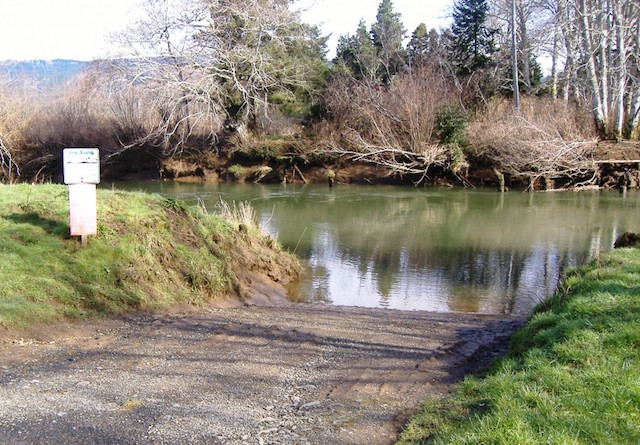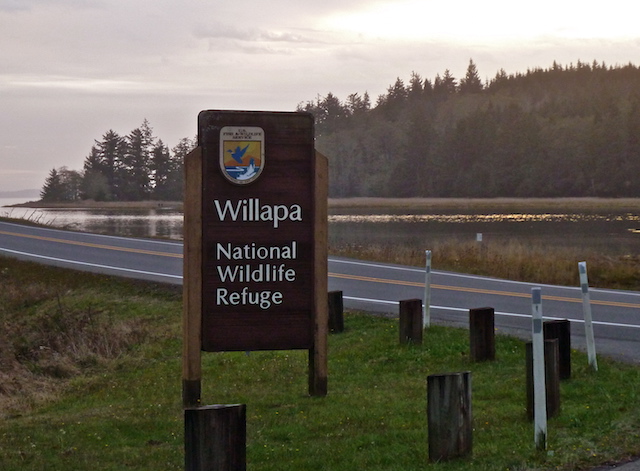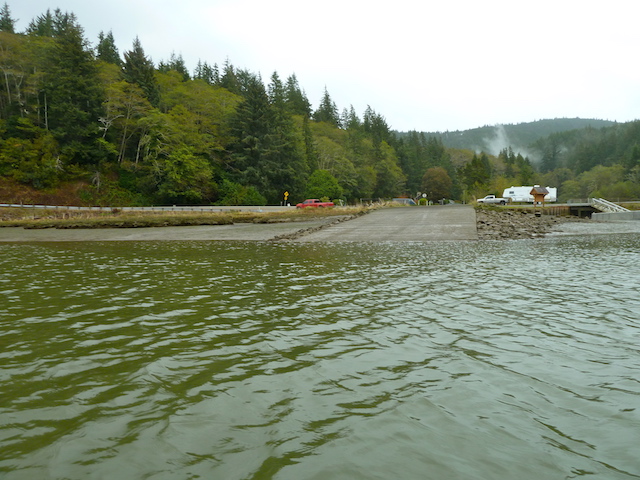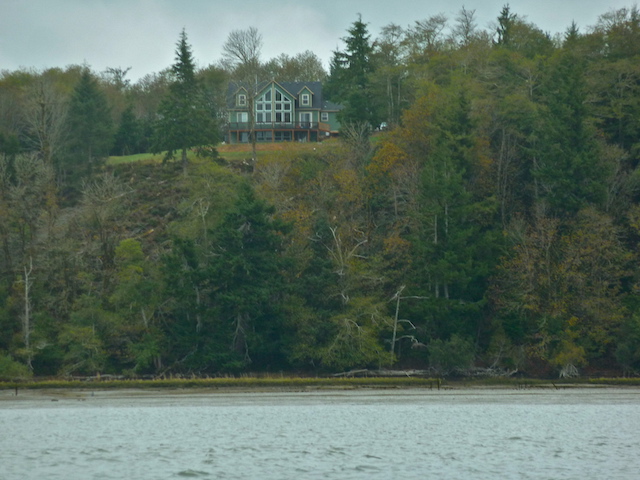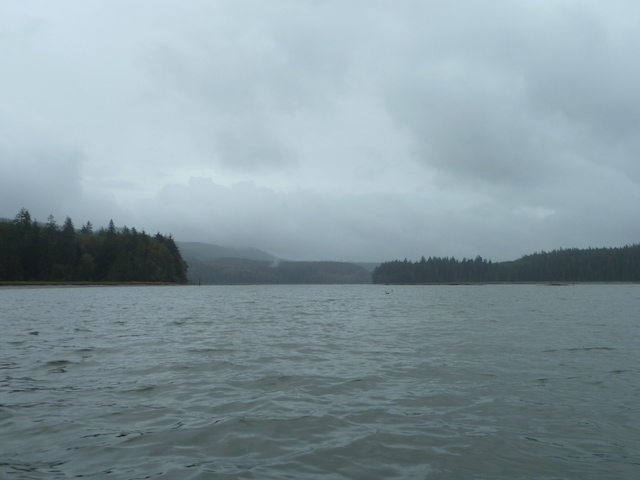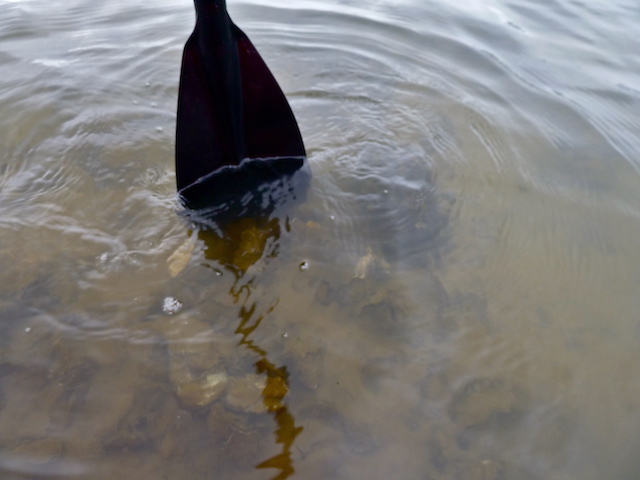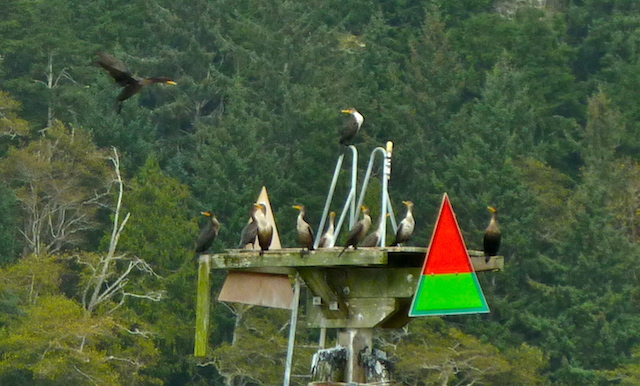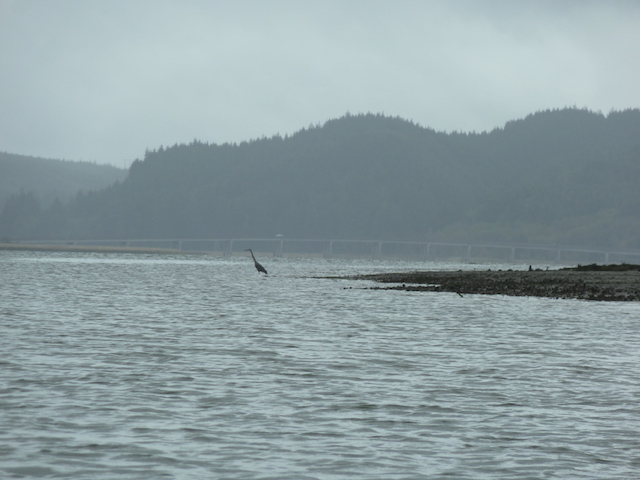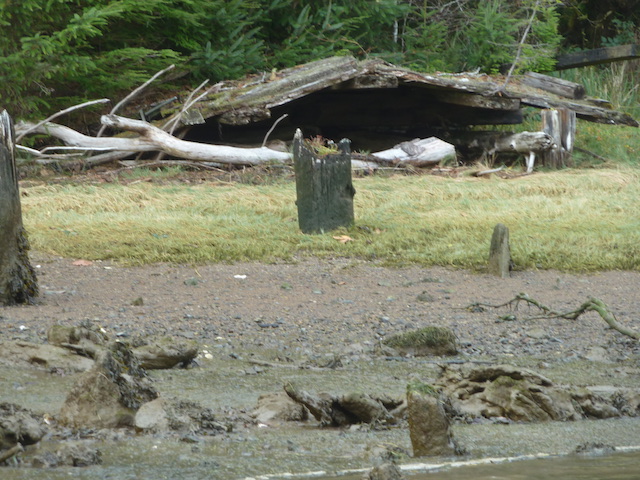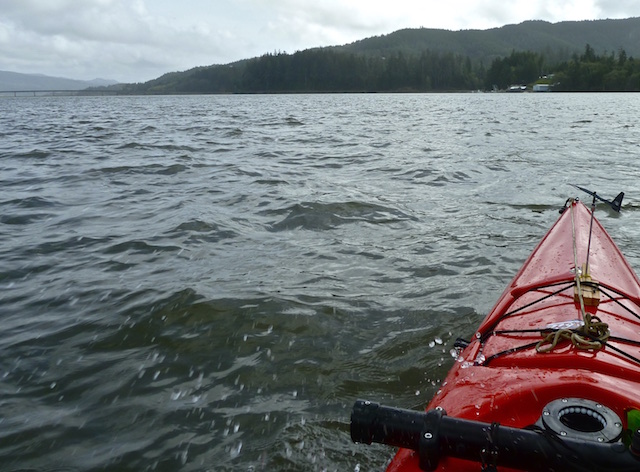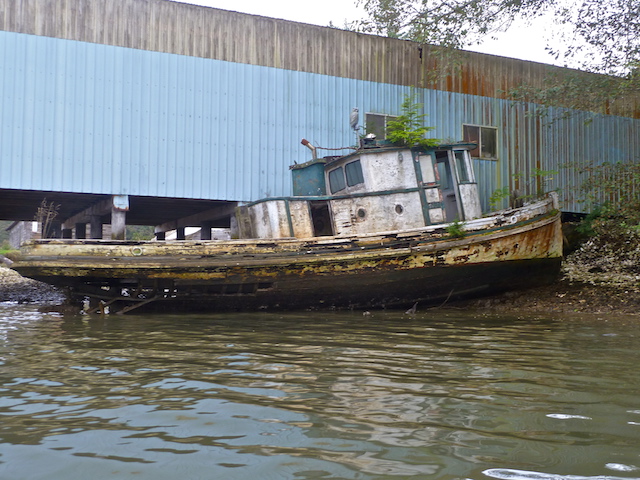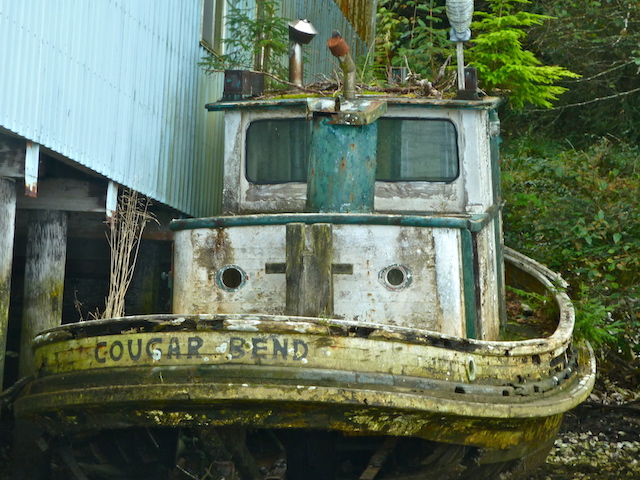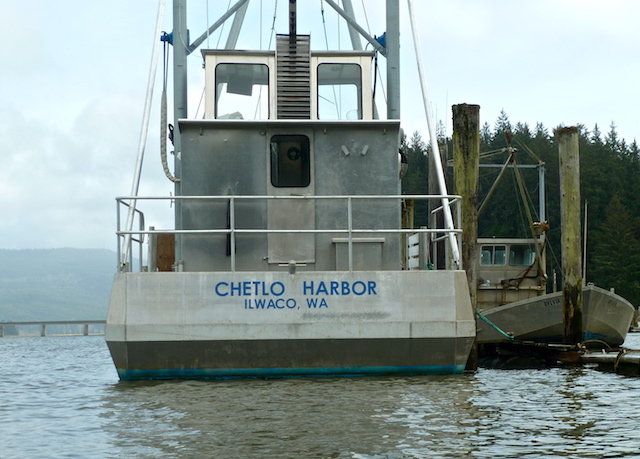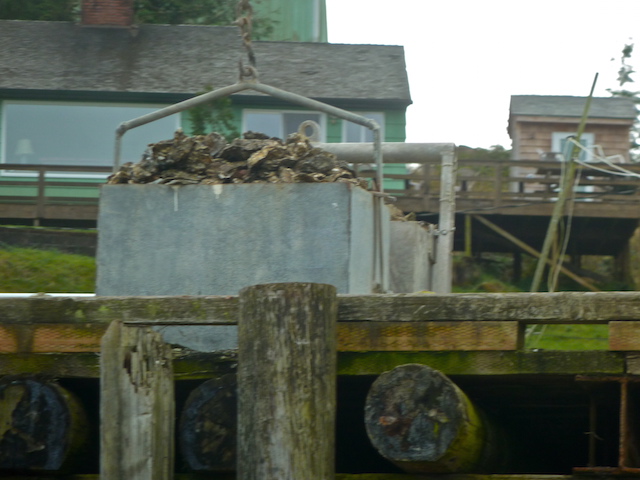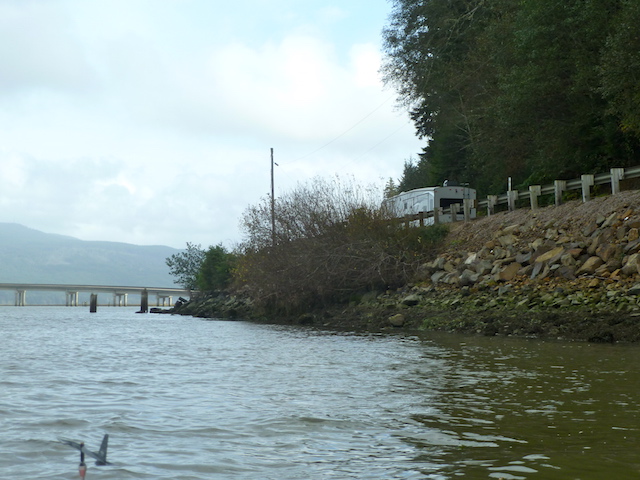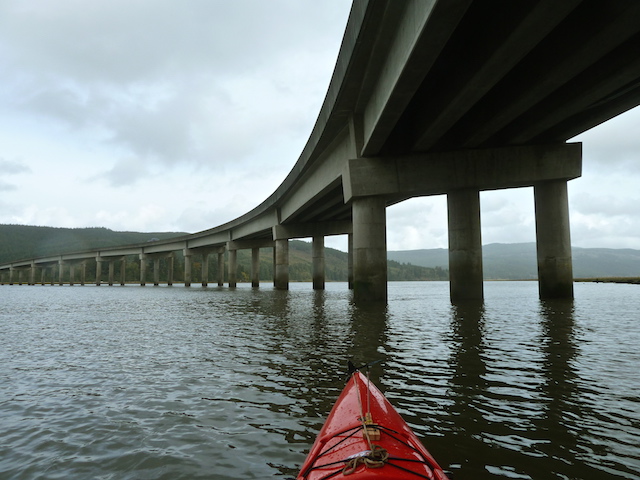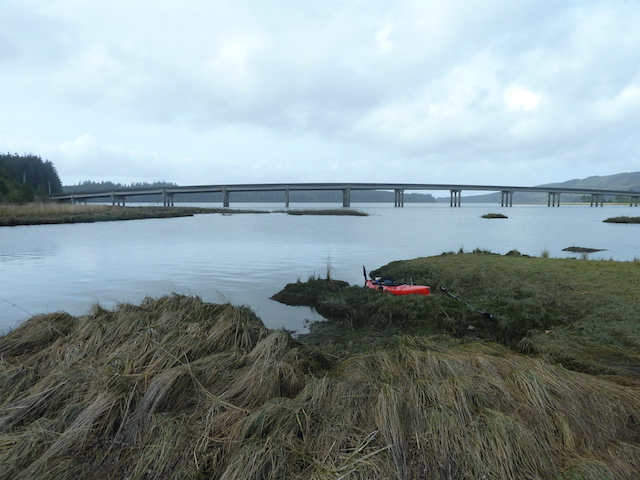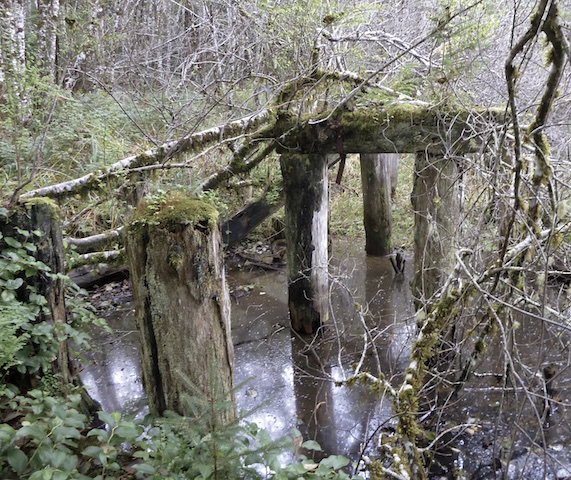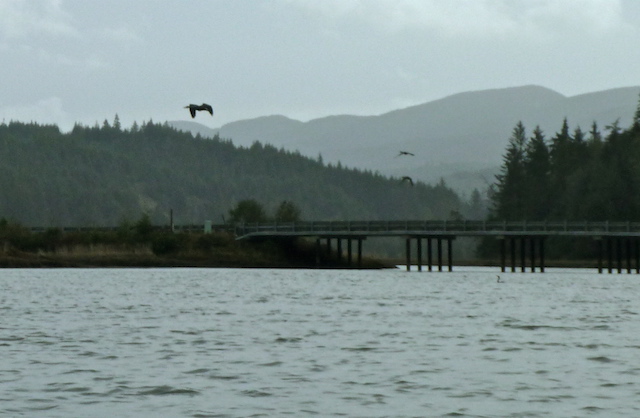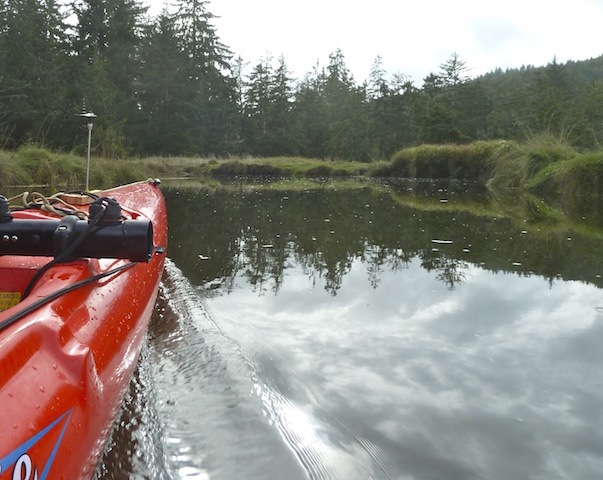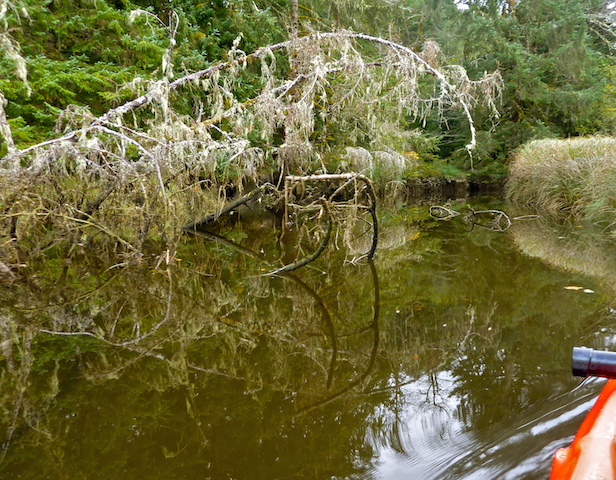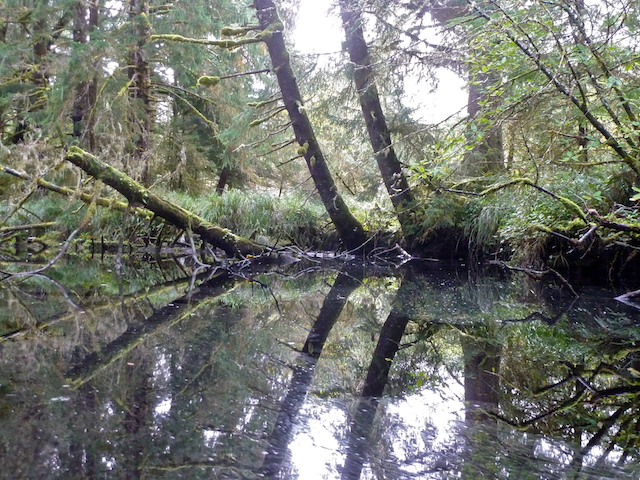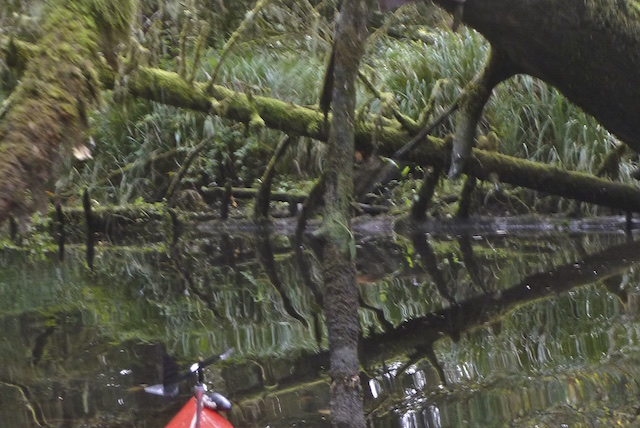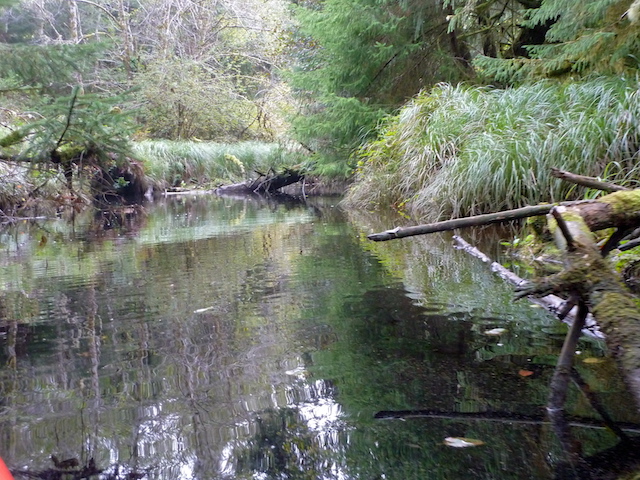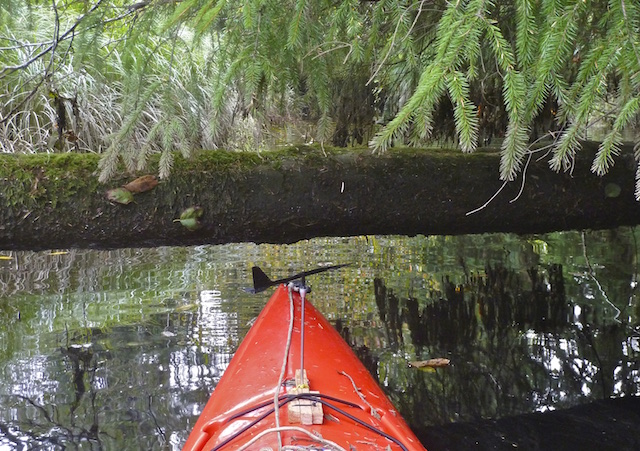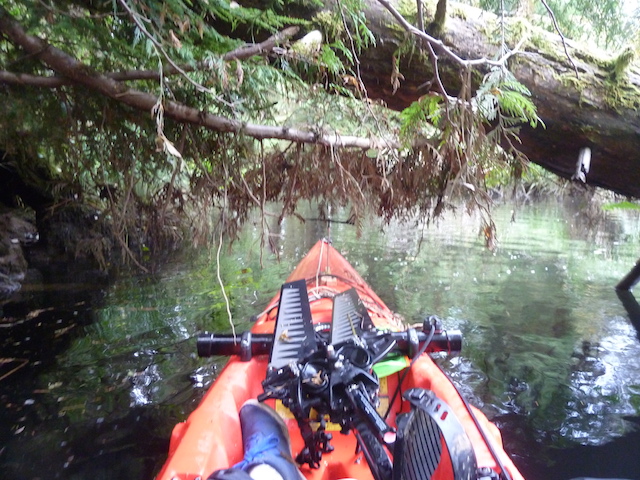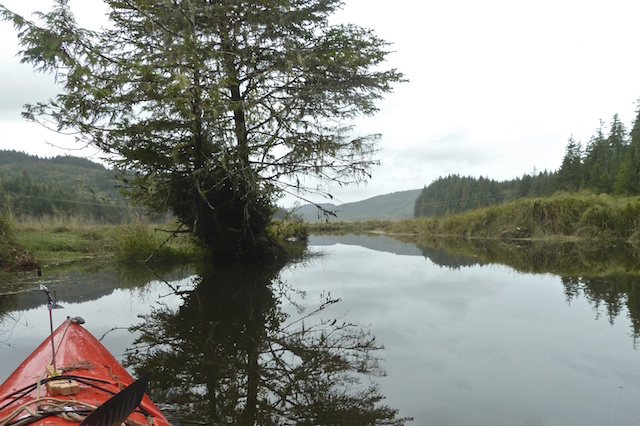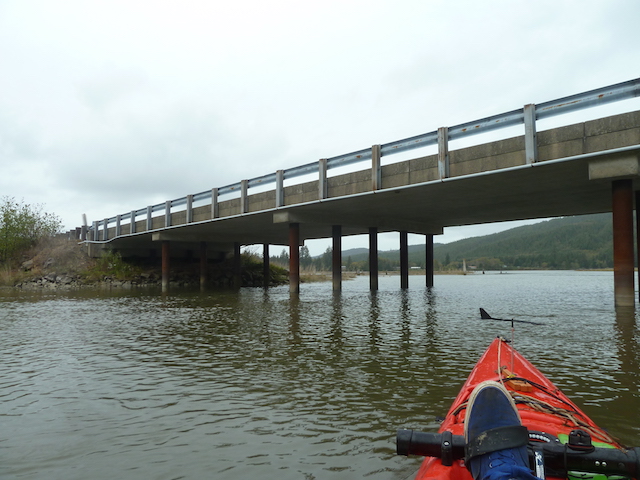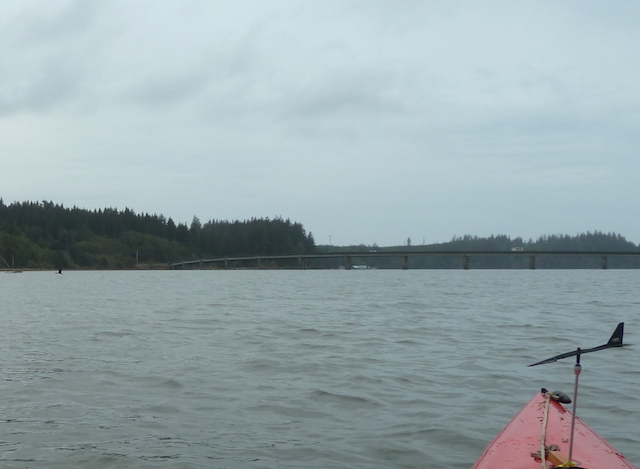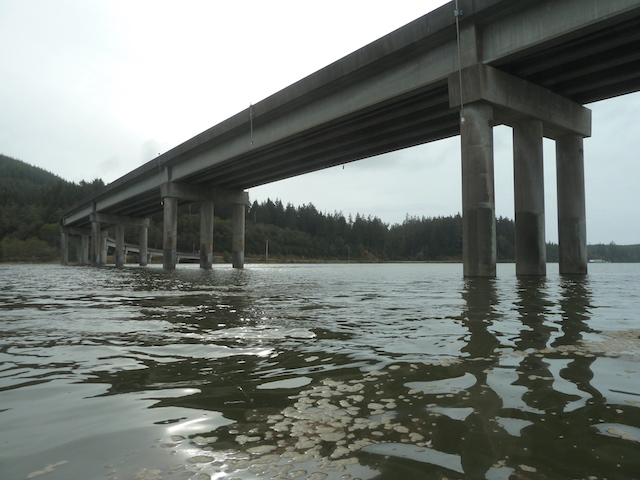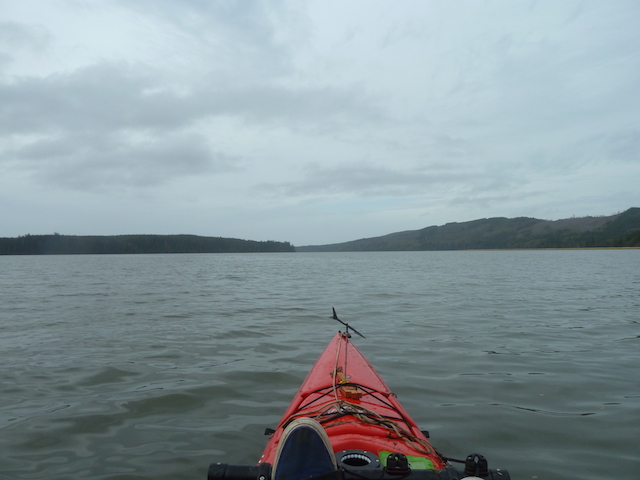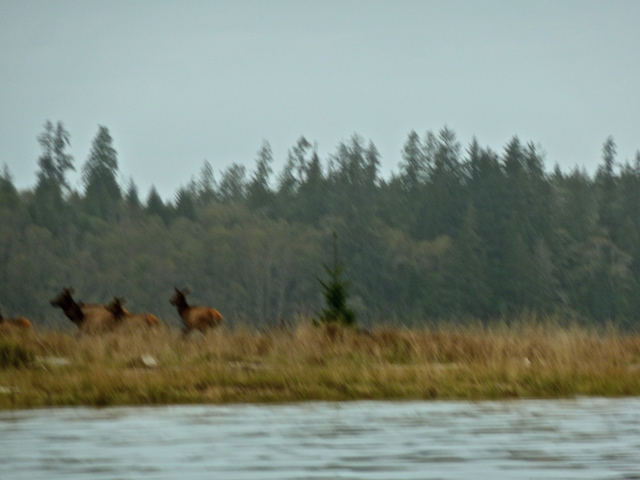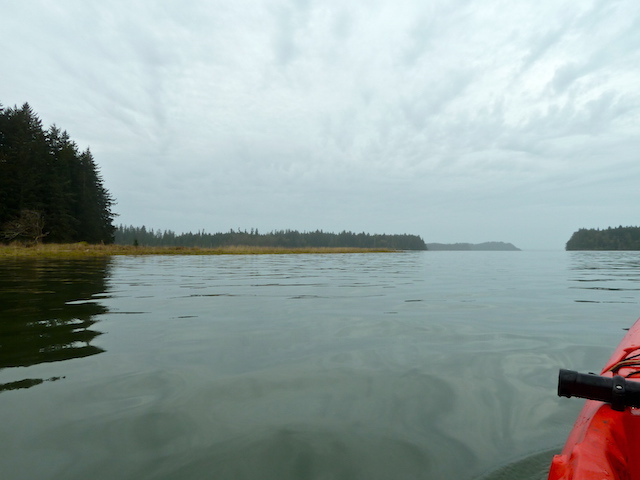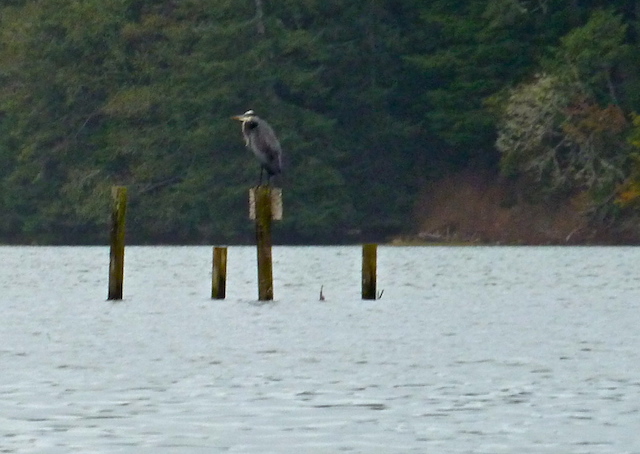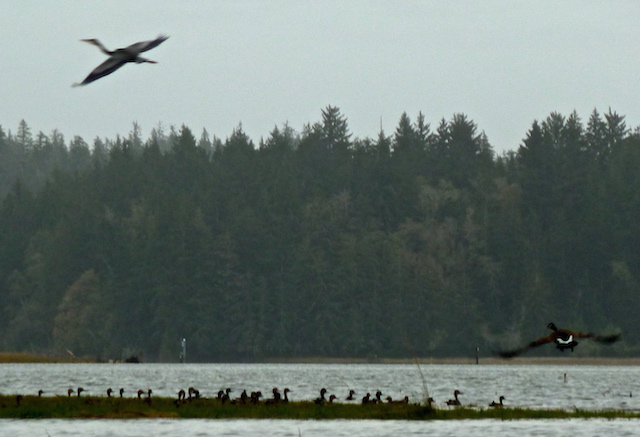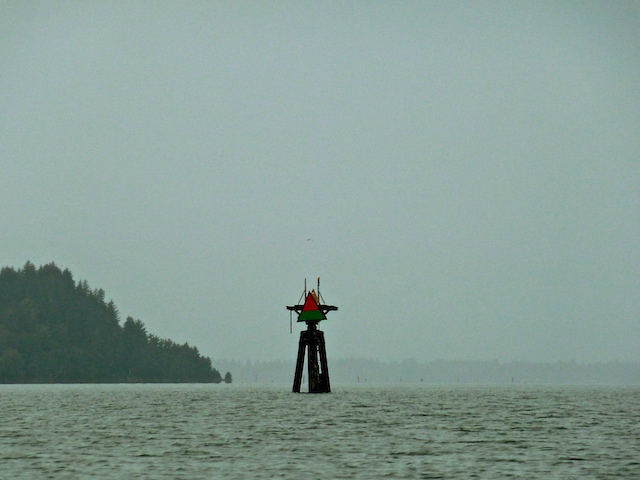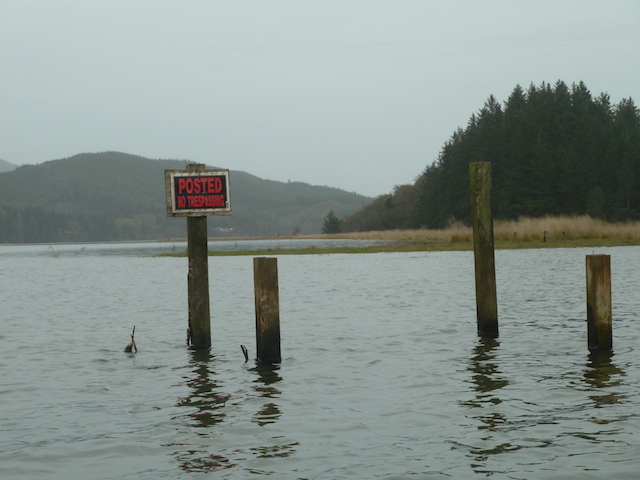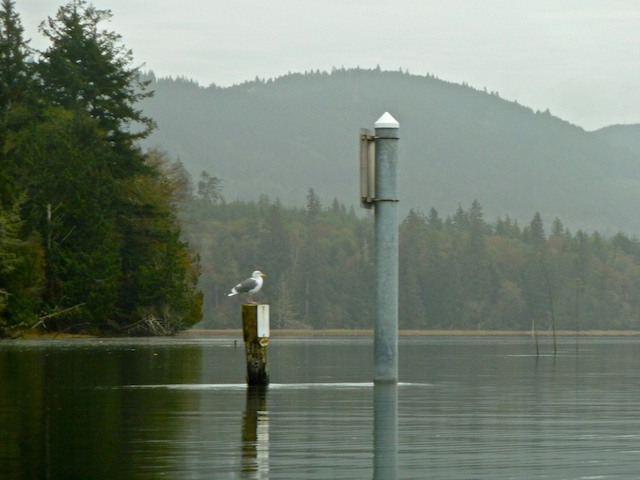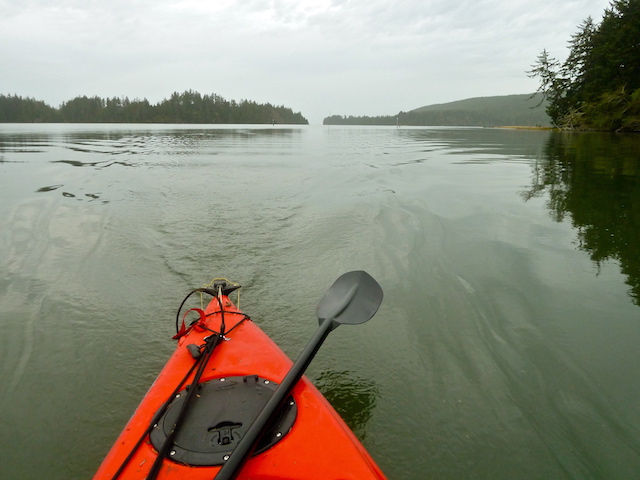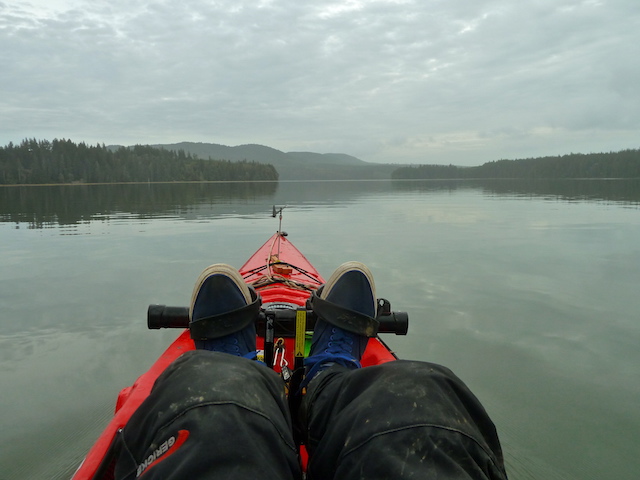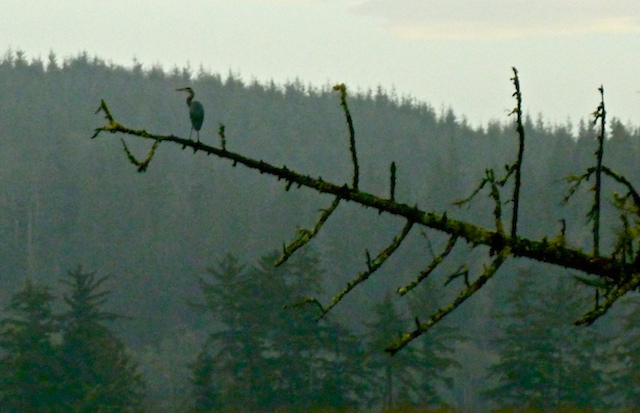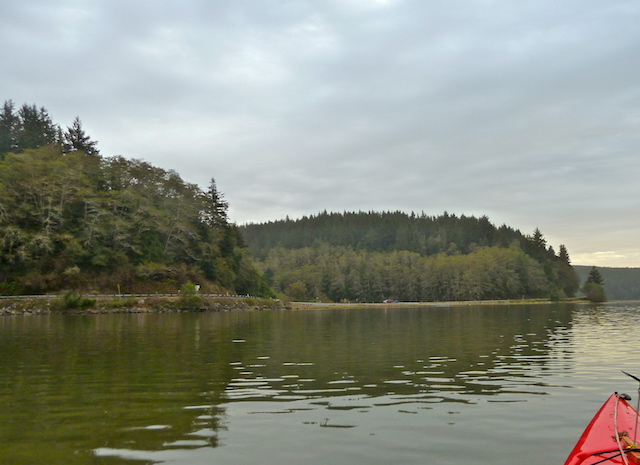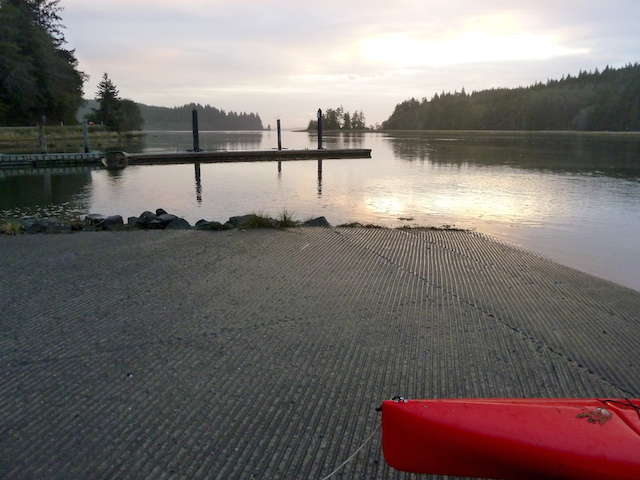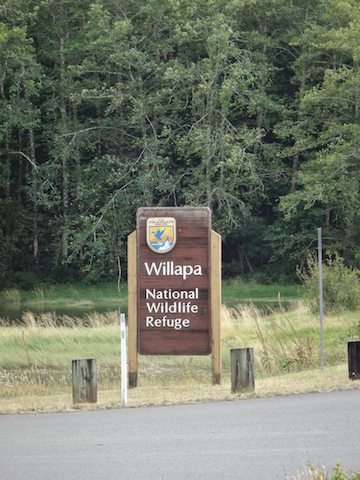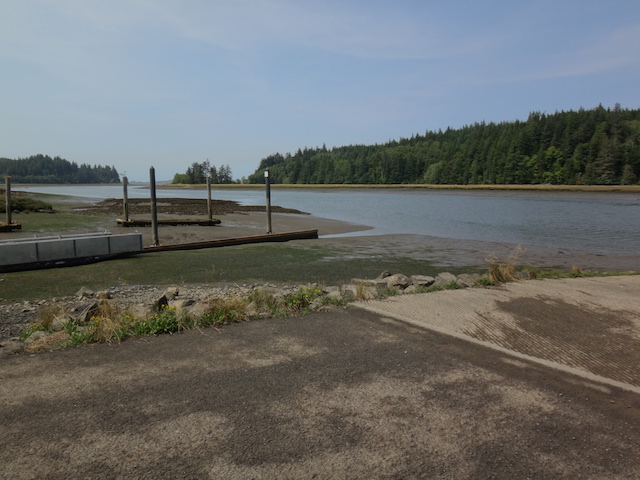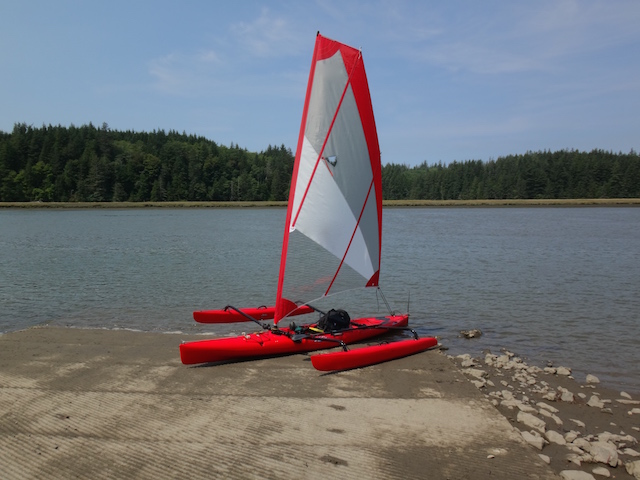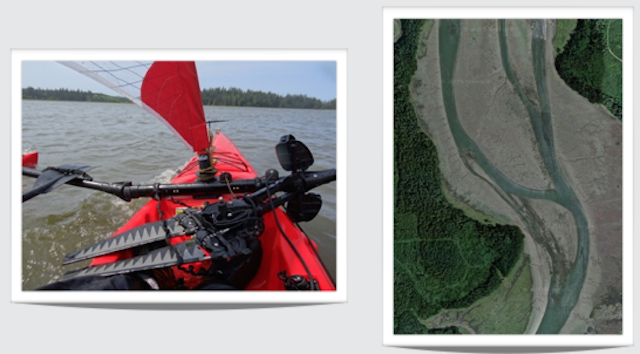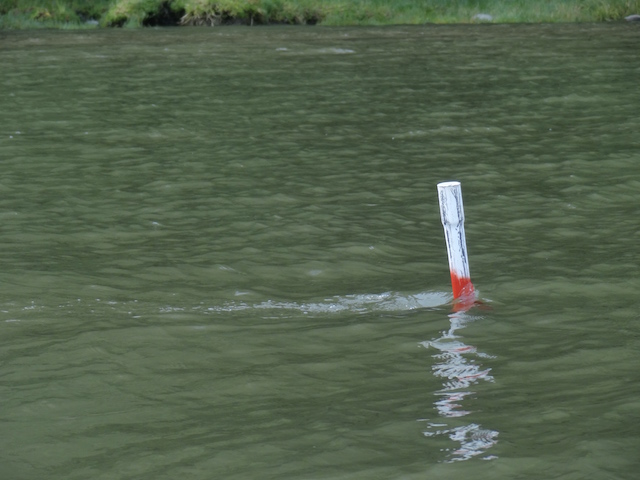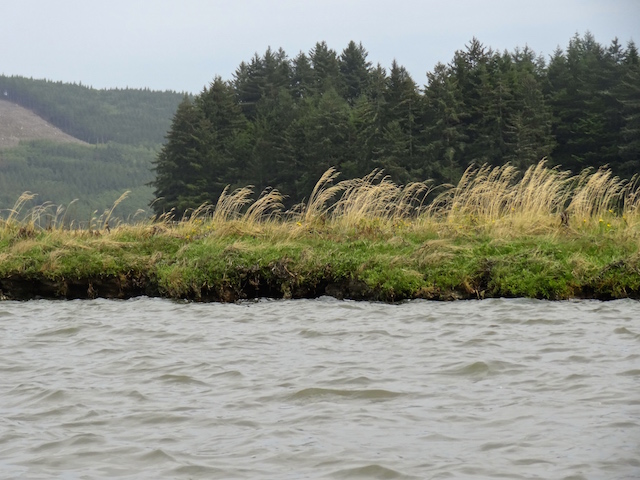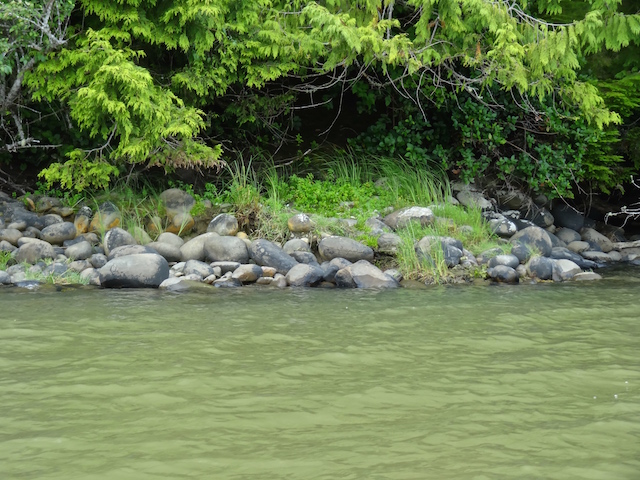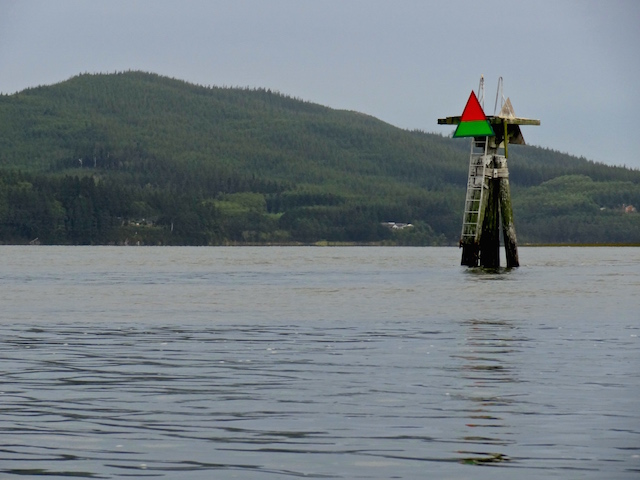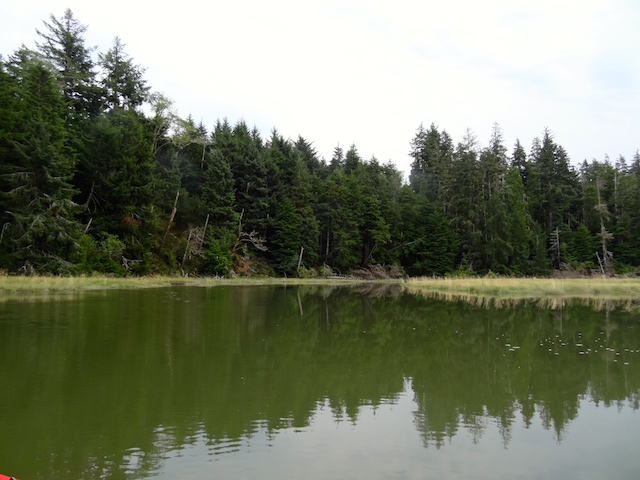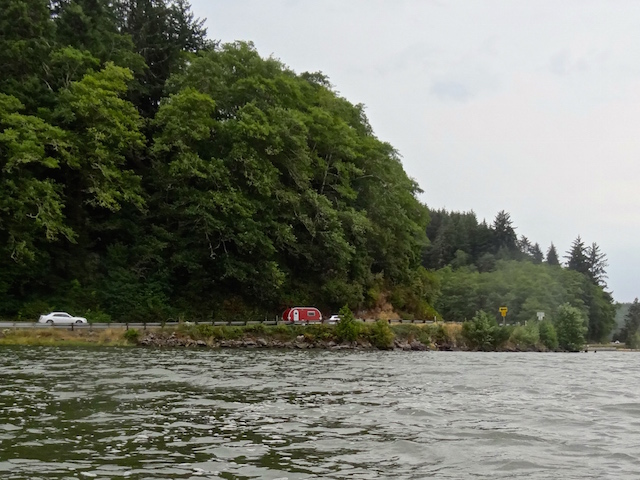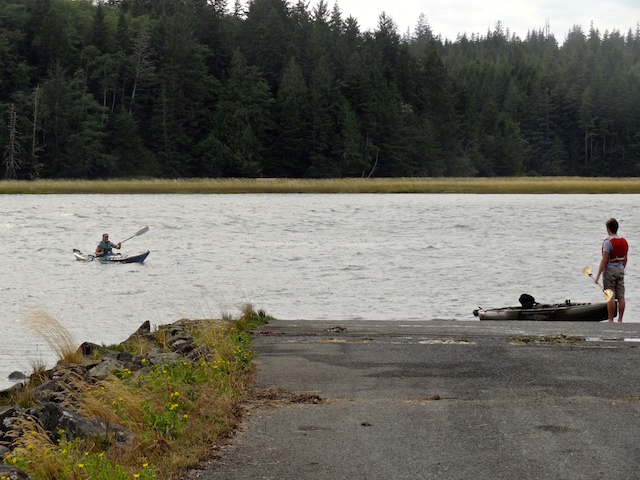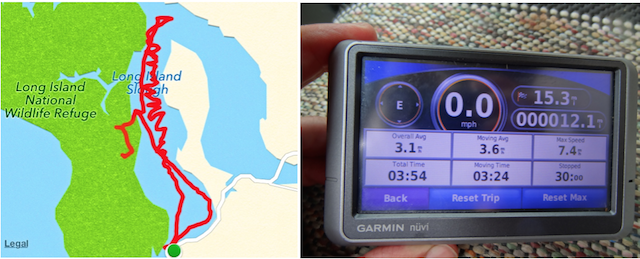There are 3 posts here, one above the other. This is meant to keep together all the posts regarding North River and its launch sites for easier reference later. This system made more sense to me than a scattered chronological order of all trips everywhere.
September 18, 2022, I launched the Hobie kayak with sail kit at the Smith Creek launch and went up the North River as far as I could go without walking.
October 21, 2015, I launched the Hobie kayak at the Smith Creek launch and went up the North River a short ways before heading up Smith Creek instead.
March 23, 2015, I took the Hobie kayak from the Smith Creek launch up the North River and west on a side channel lined with houseboats until it ended.
Northernmost on the North River
18 September 2022
Flowing into the north side of Willapa Bay is the aptly named North River. Twice I have paddled its lower reaches. The first time on the North River I headed left off the main channel to check out a channel of floating homes that compelled me. I learned a lesson in floating log gates too. My second trip on the North River, cosmic signs kept leading me back to a fine day of paddling the Smith Creek instead.

There is a navigational mystery on the Columbia River near Wauna that I’ve recently read about. I would have liked to check out. Today’s low tide and a high wind changed my mind. The wind would be 5 to 15 mph from the north, and the tide on the Columbia would likely not be high enough. It would be however, on the North River near Toke Point. Same sun and moon, it just requires the correct location on the tide graph. Then there’s the flow rate and seasonal flow to consider, but that hasn’t been a problem yet.


I must be missing something, as the half dozen boats I saw today, except mine, were all fishing. If I learned how to fish, I could troll a hook the whole trip and maybe come home with dinner. It would add more complexity and cost, but everybody else is doing it. My dad was a dinghy sailor, not a fisherman. Dad and I would paddle about in his home-built canoe before kayaks became popular, so my non-fishing trips are plenty sentimental.
With the predicted wind from the north to bring me home, I set up the sail kit to hopefully go the furthest. I rationalize this whole set up is cheaper than a small outboard motor and forces a workout.
In my rear view, Smith Creek’s launch is next to the column on the left.

I passed the familiar North River Resort. Another fishing boat is heading upstream by their pilings.

Then come the cabins which are always interesting.

Floating cabins sometimes require big materials to maintain. This one was getting new siding and roofing. After brief pleasantries, I found out that their materials were brought in by boat. Once home, I looked at the map again and still wonder where the residents park their vehicles to boat in. This crew had a four legged supervisor.


Another cabin had homey porch landscaping.

I think I spot tomatoes.

Another porch had their landscaping tools highlighted by an old crosscut saw blade above.

Here is a natural shoreline pattern. Some logs don’t interest the saw mills.

This tree has thick mossy branches even at the end of a dry summer.

Here is one of my favorite cabins because on my first trip the owner had guests with their boats tied up and was enjoying sitting by the river with friends and a BBQ. They had waved and were friendly. I figured this is a terrestrial heaven for people who sport fish.

No one waved today.
Speaking of privacy, not everyone who buys such isolated homes are welcoming of looky loos. I was floating by with no motor sounds to warn them. I used the telephoto and cropping staying thirty feet or more away but, sometimes an owner just needs a solid fence.

This would aid dropping logs into the river for a tow maybe? The opposite shore was clear without pilings so I don’t think it’s railroad related. A satellite view shows a shadowy trail leading from this dock through the woods to a logged off area.

A clever water system. At the top of the bank the creek is sandbagged and fed into this flexible pipe for boat access. It was a waterfall sound in the quiet.

If there was a breeze, it didn’t descend into this valley.

I was fortunate be here at the right time when the reflected sun dappled the trees.

Here is a minute video of the light show.
The river narrowed.

I crossed the county line and had reached the shallows where I had predicted in my book of paddle launch sites. The book covers the area from Ocean Shores to Nehalem and west up the Columbia to Stella and Clatskanie. Here a shallow gravel bar extended across the river offering me the option to walk but not to float ahead. Sometimes dragging the boat is the answer but it was getting late. The tide was coming in but the water was flowing out.

The last view upstream. The little ‘Wind in the Willows’ wind vane on the foredeck was ready while its ceramic figures waited at home.


On the way downstream I passed a container garden of locally sourced moss, ferns and grasses.

There were fish. Impressive were the silver ones over a foot long. Too fleeting for my camera but maybe not for an alert dog and a fisherman.




After about a mile and a half I returned to what a fisherman referred to as ‘The Bend’.

There are houses hidden on one shore and the floating cabin furthest from ‘civilization’ of them all. Today it radiated power saw noises as the owner finished improvements before the coming winter.

The river returned to being calm. The fish jumped, a heron squawked as it moved downstream, and LGBs (Little Gray Birds) entertained. I would have had more time on the water leaving the sail kit at home, the numbers bear that out. Kayaking is best enjoyed when it’s simple.

I first ran across the term ‘dolphin’ marked on my GPS navigator while doing the Wallooskee on the Youngs River.

Further downstream I glided by more dolphins in this thirty second video.
It was late afternoon, the workers had left. The North River Resort’s dock came into view.

Off to the left was another side channel. I saw what looked like a dairy shelter behind a dike. Then it was back to the Smith River launch.

Sunset time. Here the sun is falling over Hawks Point and Tokeland just before returning to the mouth of Smith River.

Driving home, I briefly stopped to enjoy the sun setting over Willapa Bay at Bone River…

…where the birds seen above took off west.

The free Map My Tracks app recorded my route.

The little waterproof and floatable Garmin with marine maps recorded statistics today. The phone’s free ‘Maps’ app was handy to cross reference the upper river reaches where the ‘big boat’ maps don’t go.

13.2 miles traveled in 4 hours and 52 minutes with a maximum speed of 5.2 mph averaging 2.7 moving mph.
21 October 2015: A Short Paddle North River (before heading up Smith Creek instead)
Last time I headed up North River, I turned left when I saw the second string of houseboats and continued on until it ended. Turns out, the main channel continued on the right for maybe eight more miles, and more houseboats to see too but, three things put a rethink to that.
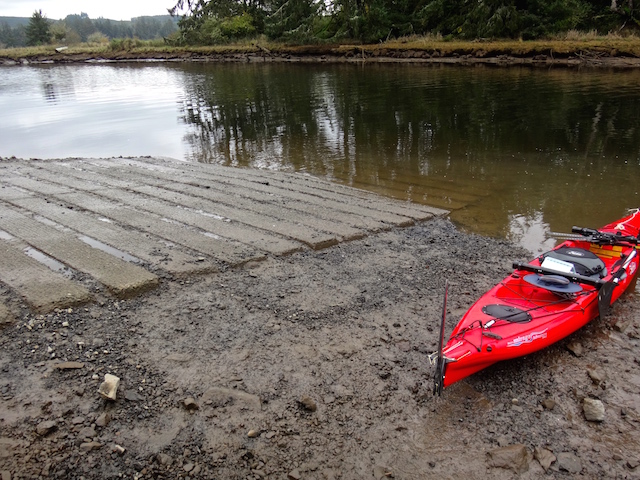
Rethink #1: It started raining. I saw four open boats with bundled up fishermen heading back. When I was growing up, my dad wouldn’t cancel a trip because of the rain. He said we would have been canceling a lot of trips and just included rain in the plan.
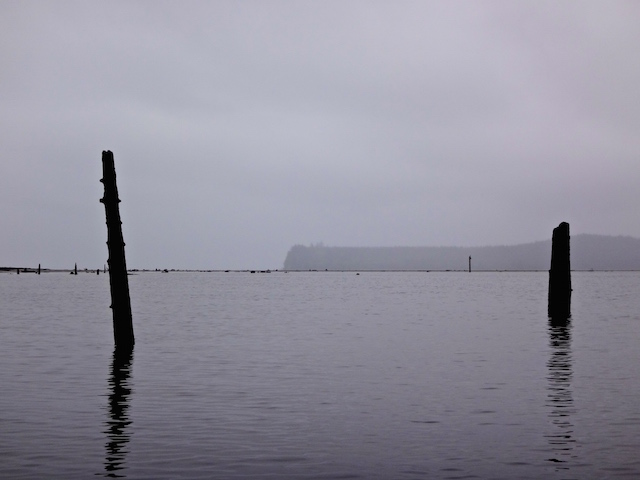
Rethink #2: A drive flipper almost fell off. I had ‘improved’ the original attachment bolts to more quickly take apart the system. (I seem to hit sunken stuff a lot). The salt water had frozen my pliers so I could not install a spare replacement bolt I carried. My fix with zip ties and wire held it together the rest of the day. The two flexing flippers swing back and forth to power the boat. I didn’t think it wise to keep going further away with my plastic repair.
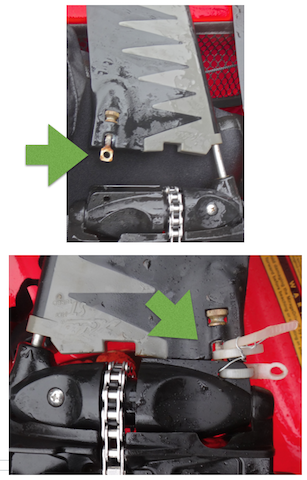
Rethink #3: No drinking water for me, my water bottles were back in the car. A PB sandwich and crackers plus a four-hour trip ahead, oops.
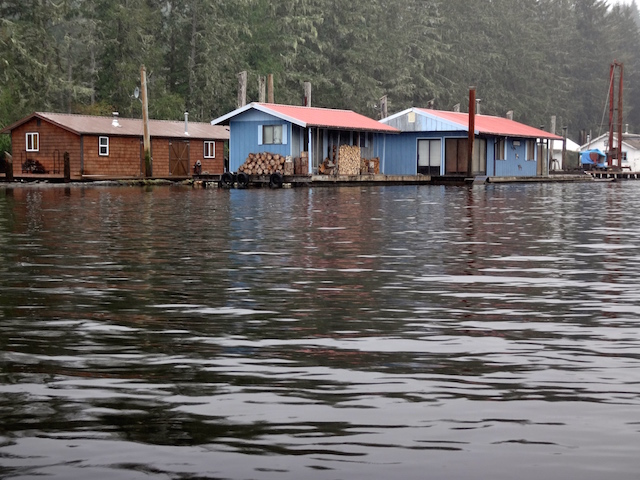
In 2010 a 1,250 sq. ft. 3 bedroom house tied along here sold for $20,000. Here’s the listing.
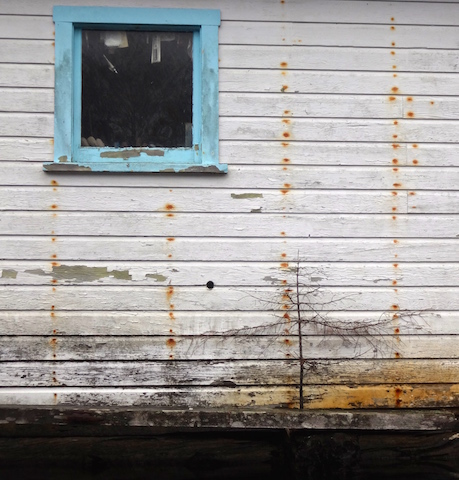
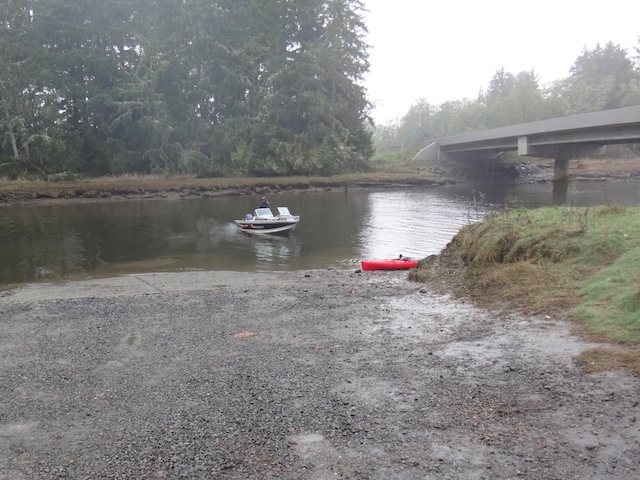
I didn’t want to go home, the fun hadn’t really started yet. Smith Creek shouldn’t take too long. It actually took me two hours up and back and is posted under ‘Smith Creek.’
23 March 2015: Paddling up the North River
The North River is at the top of Willapa Bay, a little over an hour away from Ilwaco. Further upstream it also crosses Highway 101 near Artic. A local told me today that he once paddled 35 miles downstream from Artic to Willapa Bay. Well, sorry, we’re just going upriver three and a quarter miles, but, this isn’t just an ordinary woodsy river.
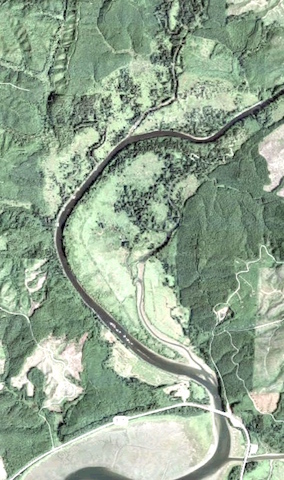
See those white dots in the river above the ‘105’ sign? I found out from poking around the internet that those are floating cabins. There are no access roads, nor do any cabins seem to be for sale as far as my searches can determine. Zillow.com doesn’t place a value on these cabins either but if you want a 500 square foot cabin in Seattle, $275,000 will get you one next to Gas Works Park. http://seattlehouseboatrentals.com/sales.htm
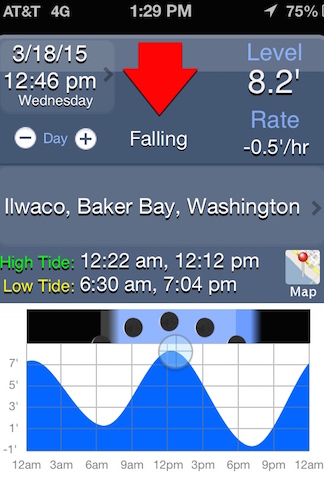
The tide was plus-eight feet and falling but I had previously seen the ramp without mud at a one-foot tide. The incoming tide could have helped me upstream if I had arrived earlier. I was sure of a quick trip back. Turned out my speed upstream was about 2-3 mph but I later got a 6.9 mph top speed reading downstream for a 2.9 mph moving average overall.
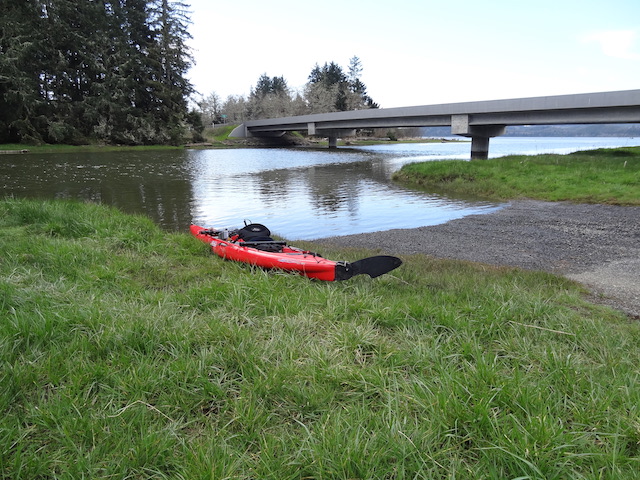
Let’s check out the cabins.
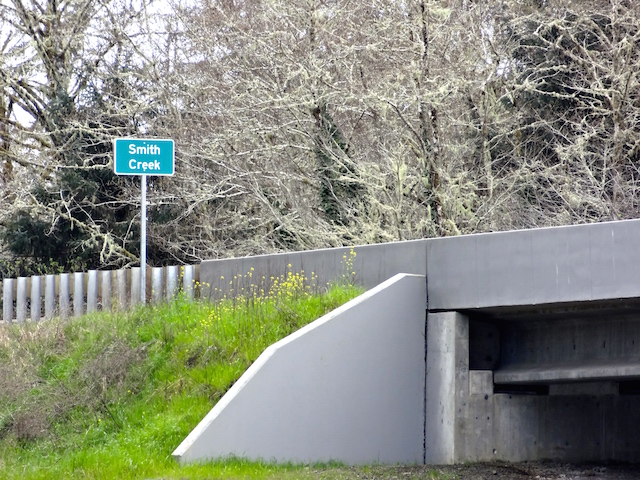
Smith Creek and the rest of the North River are going to have to be another trip. The other boats I saw today had motors and probably could explore a lot more quickly but, not quietly.
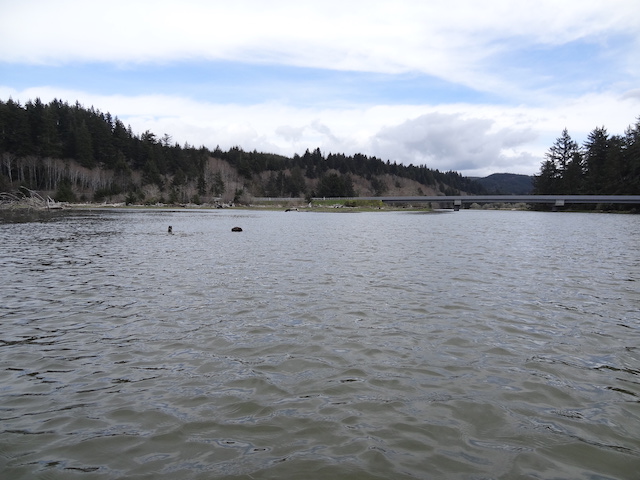
Rounding the point and heading upstream.
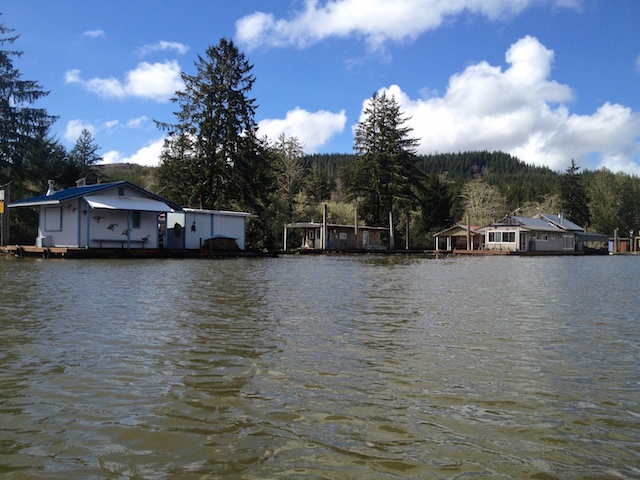
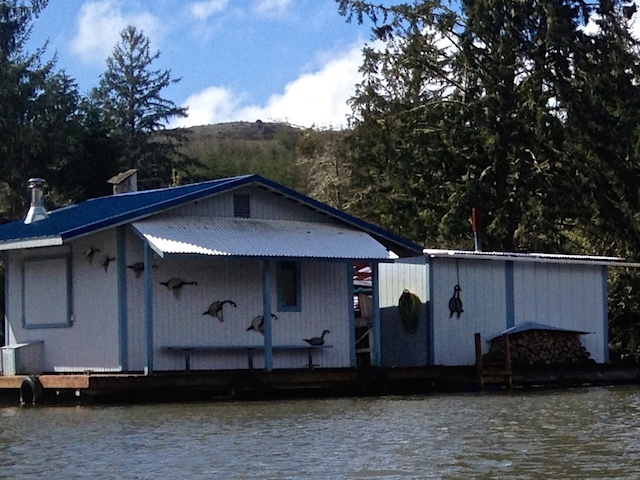
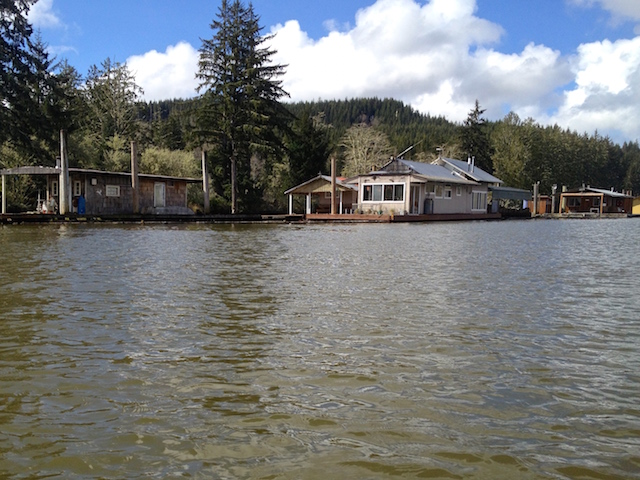

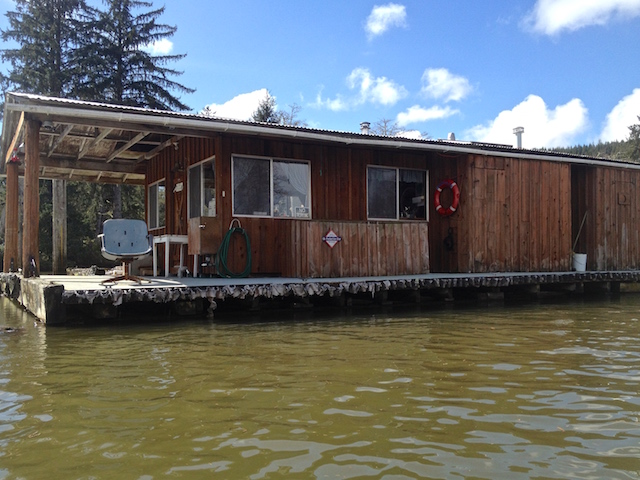
Out of respect for their privacy, I tried to stay mid-river or on the other side. I can’t imagine people in cabins out in nowheresville like to have boaters gawk at them all day.
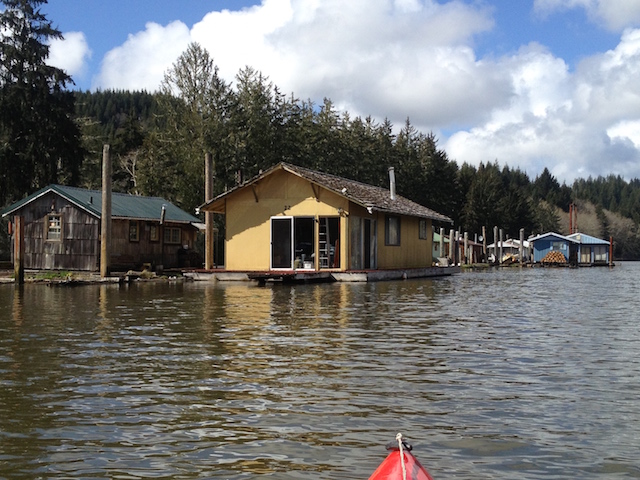
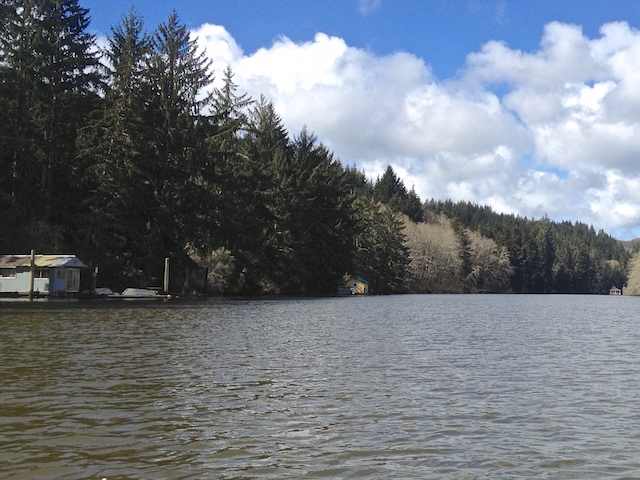
These places must have been built elsewhere and towed in.
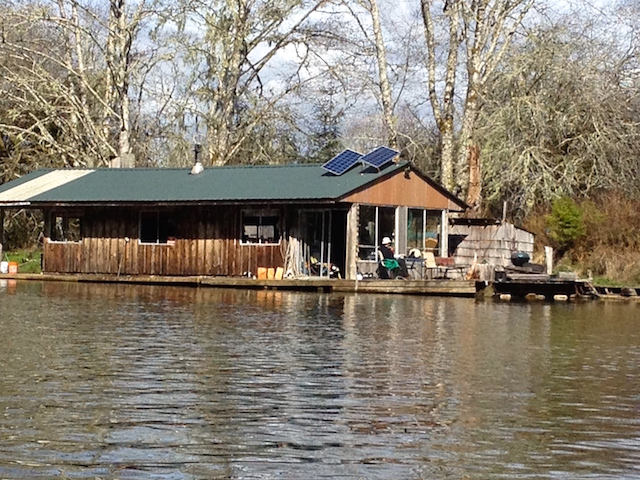
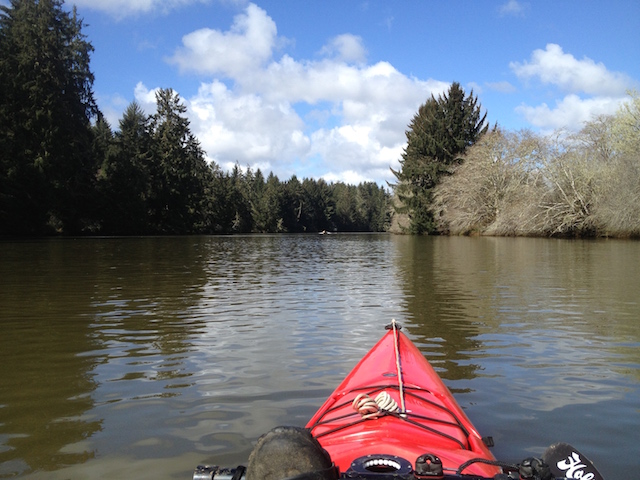
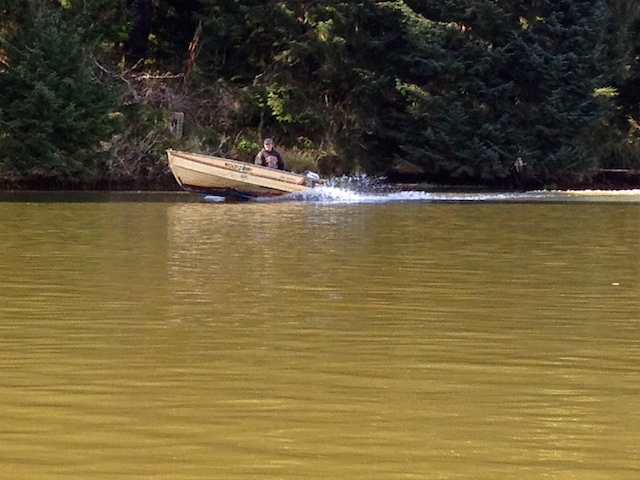
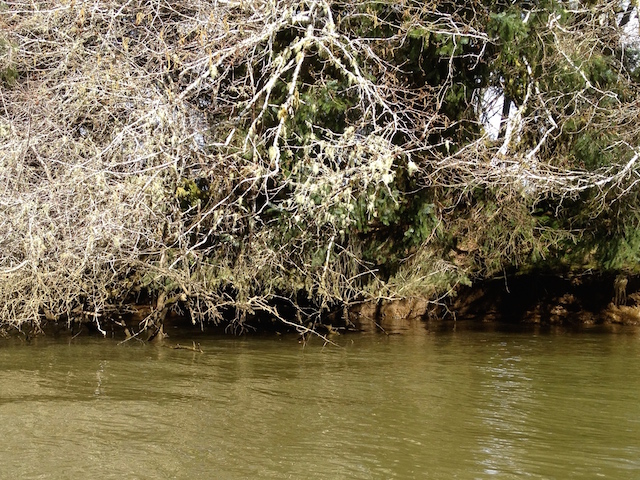
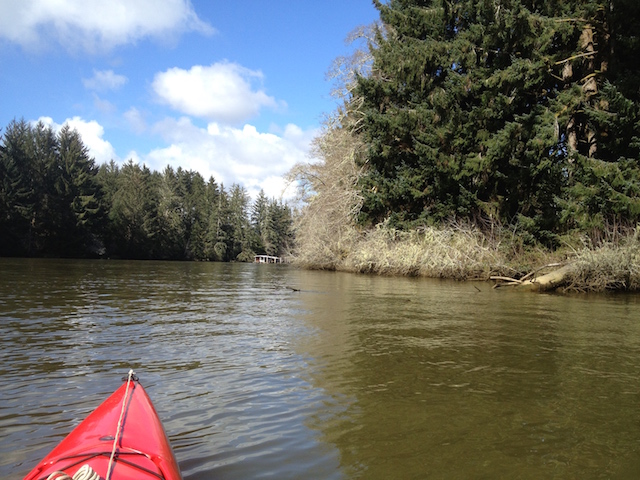
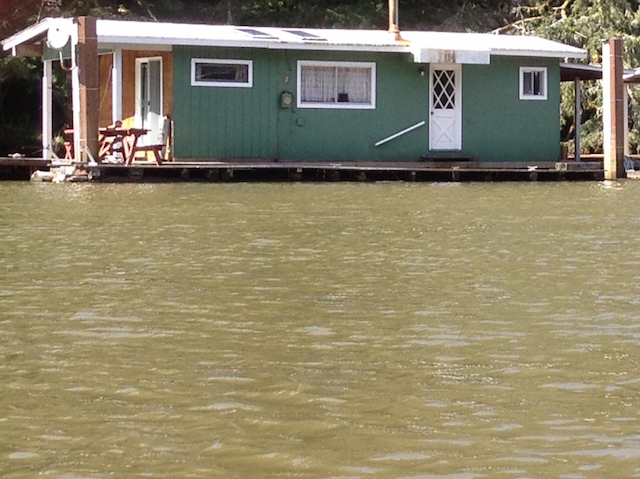
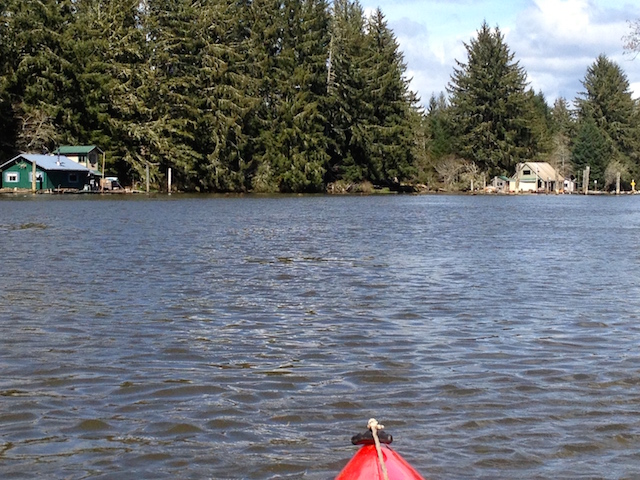
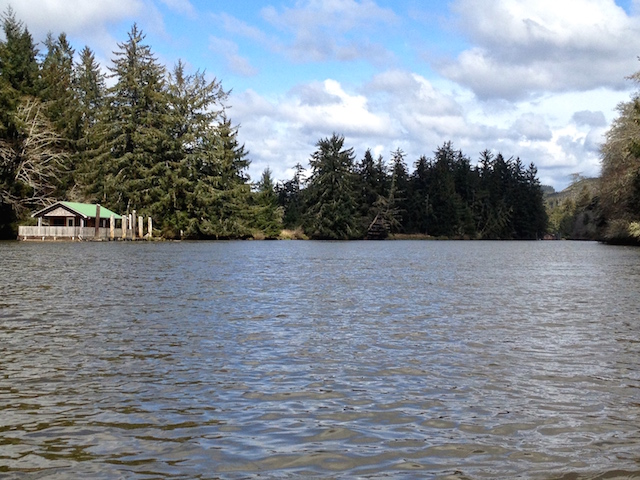
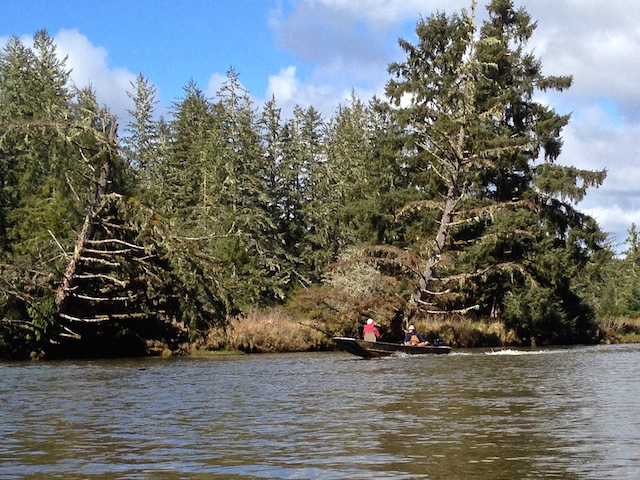
This boat slowed down until I put out a thumbs up sign. I also noticed that when I came back with the tide pretty low, a pair of vehicles with their boats already trailered waited until I beached before they drove off. I like to think people watch out for each other out here.
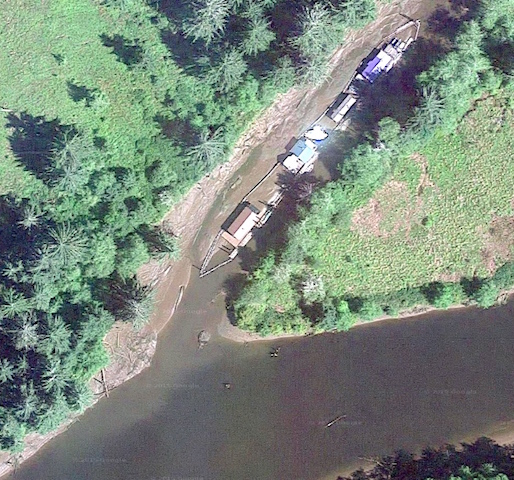
This fork in the river might have been an island, maybe not. Given a choice of a wide empty river or a narrow branch with cabins, of course, I took the cabin route. The woods and muddy banks on the main channel could wait. On the Chinook River trip, I heard from another kayaker that it’s sometimes hard to remember features of the individual rivers. I’m being a little heavy on the pictures so I can relive these trips later. I discovered later that the wider branch was the one to Artic and beyond. Yah sure, maybe if I was going downstream I could try but not today. It’s upstream and against the tide.
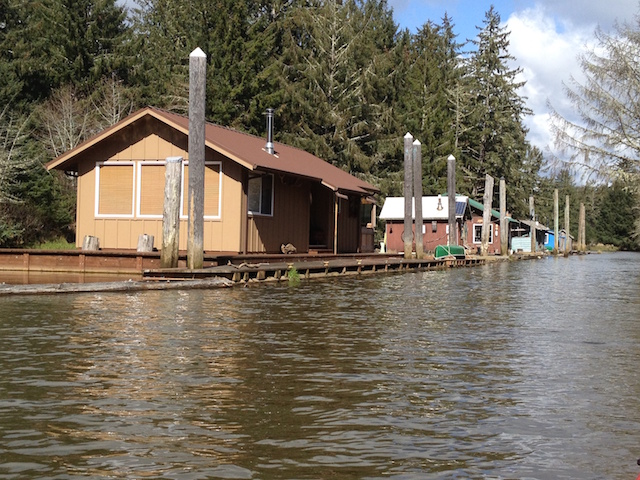
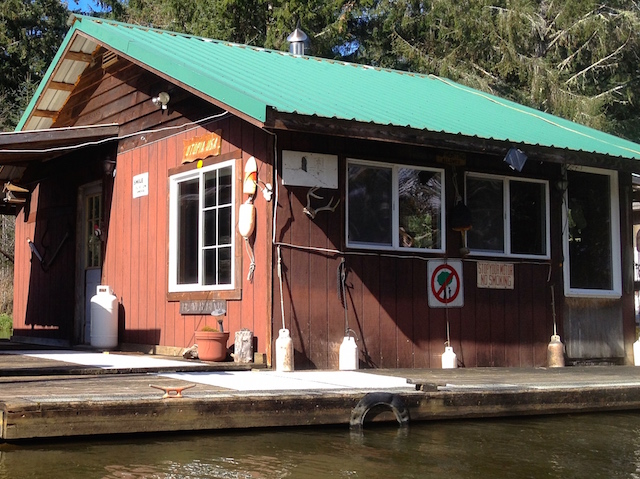
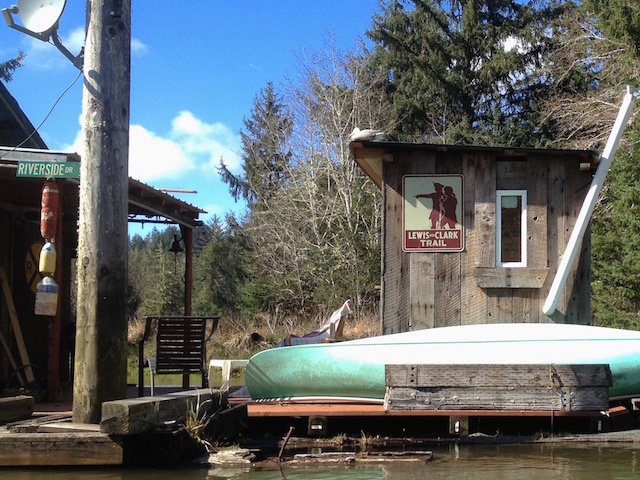
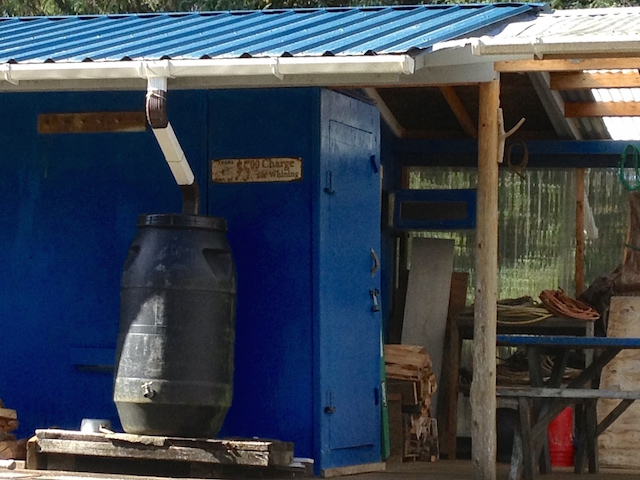
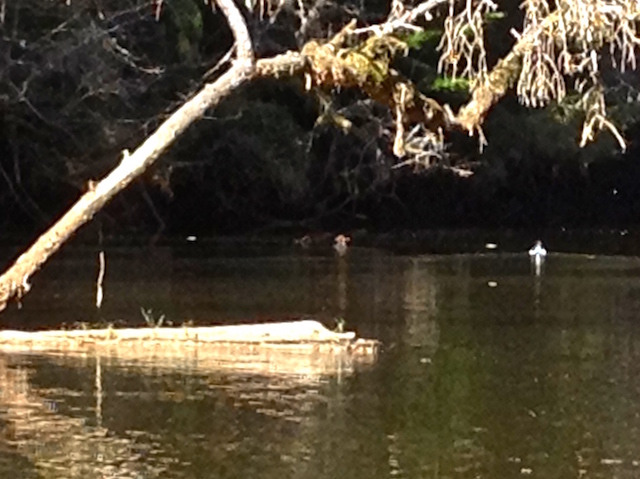
That little duck above the end of the log is a female hooded merganser I think, hanging with a male mallard. She had lovely light brown feathers done up in a mohawk that let the sun filter through. They were the best looking couple on the river and posed for a couple of movies. They did fancy footwork swim-bys, log-hops and aerial feats for me that I couldn’t do. First here’s a generic picture of her from the web:
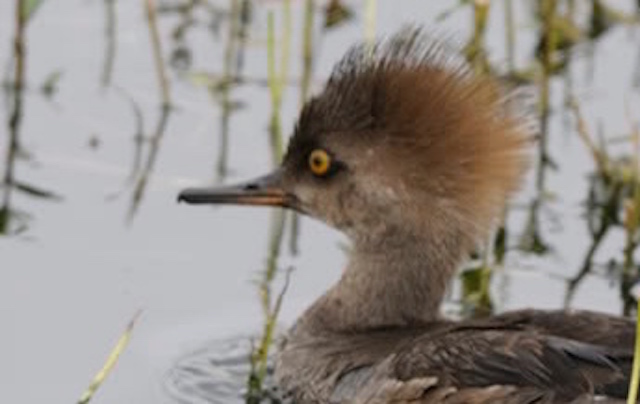
And here is a 45-second video of this couple’s performance: North River ducks video
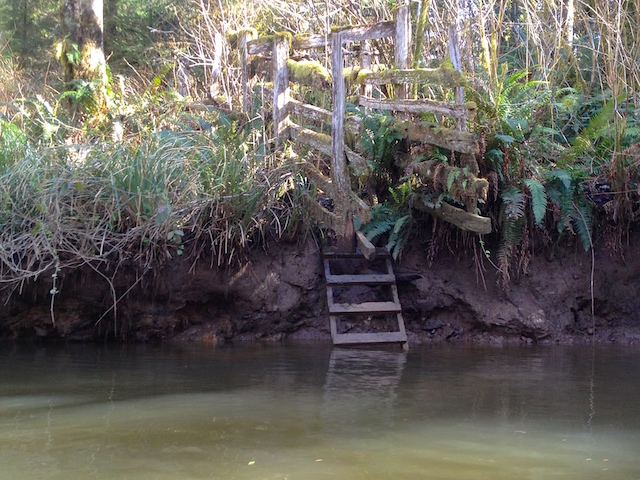
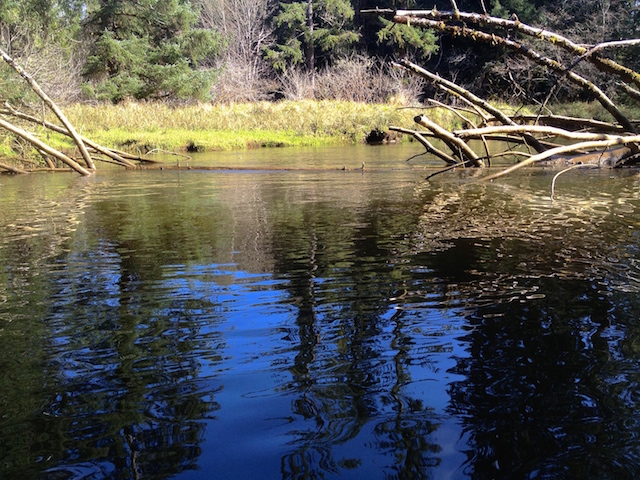
This floating log was hooked between two fallen trees. Just a little push to the left would have freed it and let it float away but I couldn’t slide it sideways. I was able to push it upstream and paddle through, and then, it closed behind me.
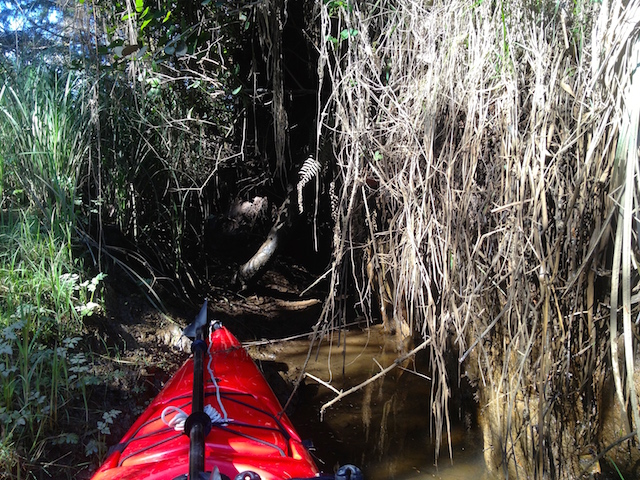
I parked in the garage, got out some food, turned around and went to undo the gate again.
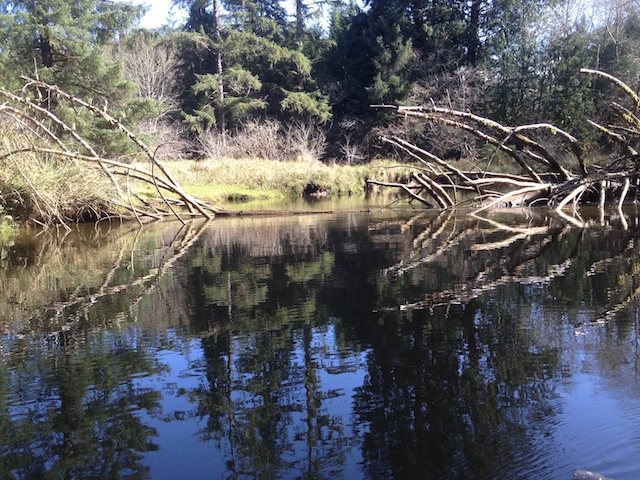
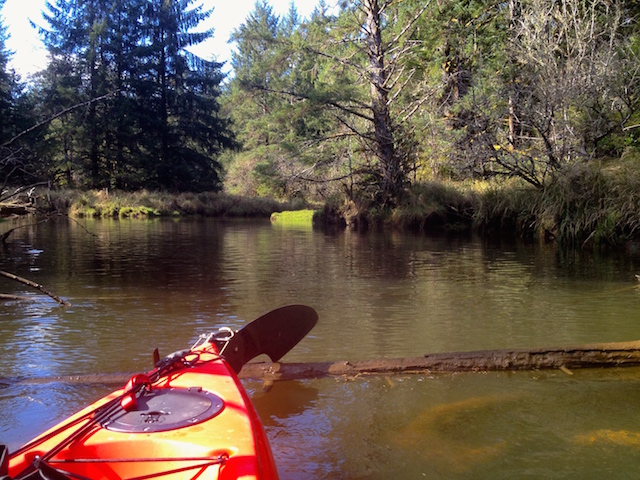
Instead, it was a push down on the shallow end of the log and pulling myself over.
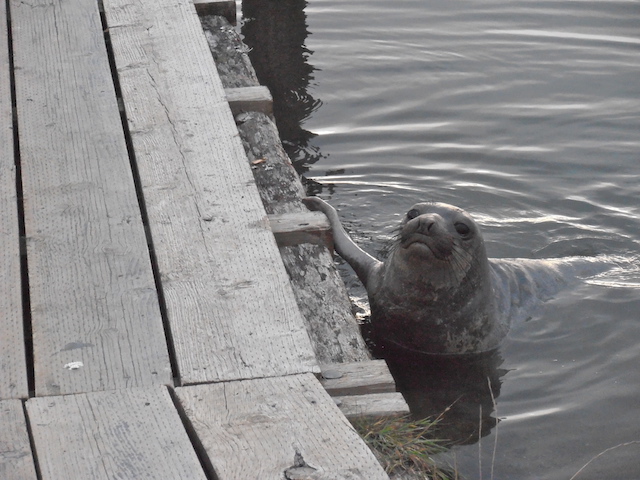
As I approached the bridge at the mouth of North River, I used up the last of the camera battery stalking a seal that had splashed off a dock. Didn’t get a picture but above is a cute picture of a seal I took on the Columbia River.
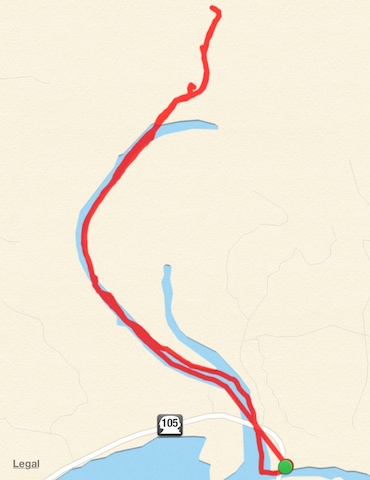
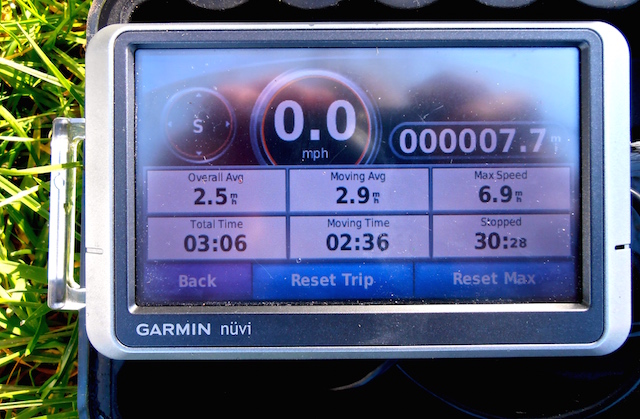
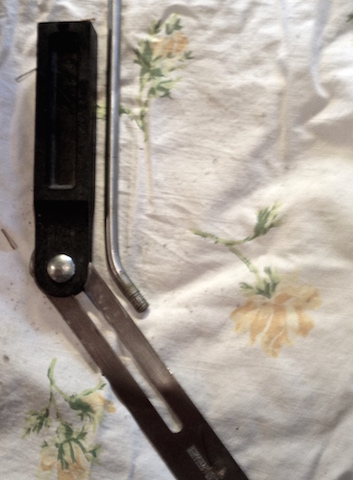
The trip must have been fun as I had to unbend both flipper rods on the foot drive when I got home. It seemed to have run OK and I wasn’t trying to jump the log gate either. The shallow side channels did grind me to a halt a few times as I looked for relics of the timber industry that used to be here but I’m not sure what I hit.
Next time maybe it will be less cabin shopping and more upriver paddling for an easy trip back. I’m not done with this river yet.


